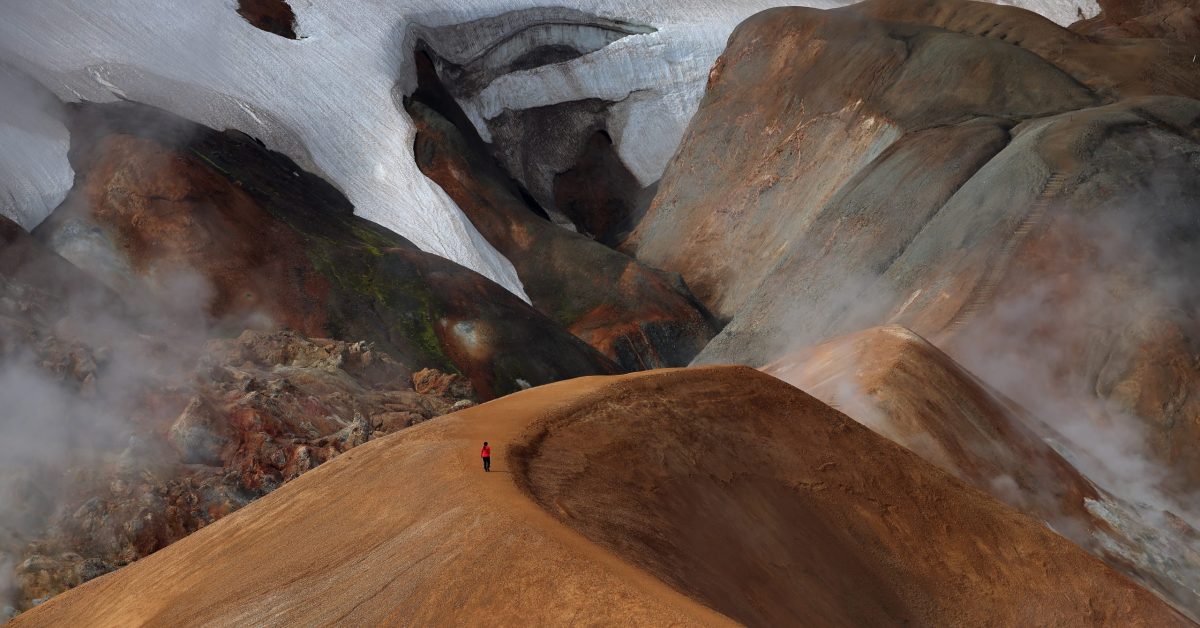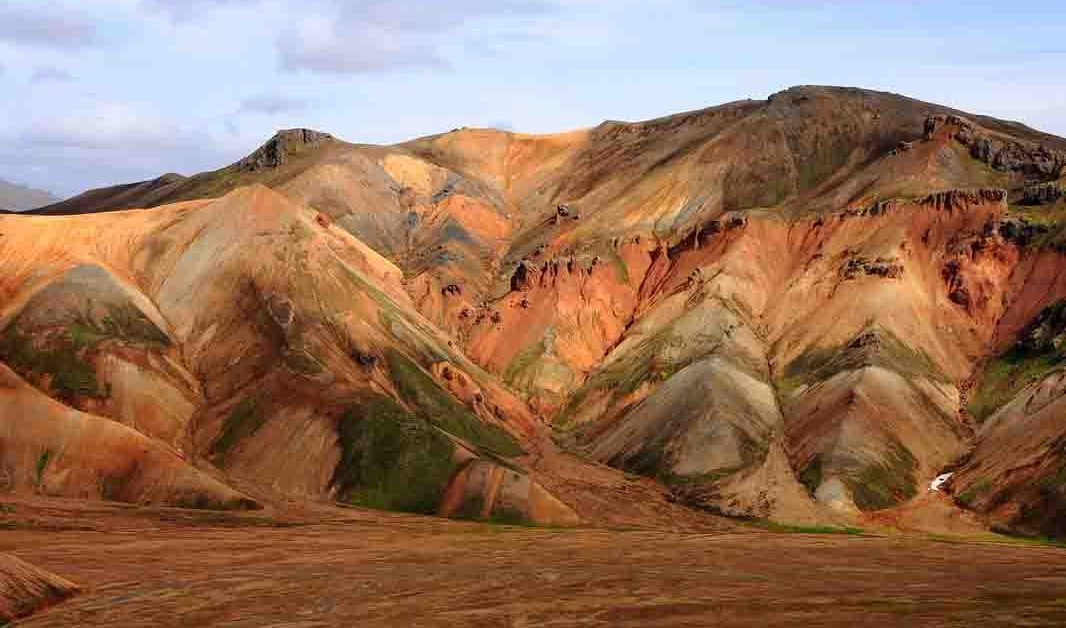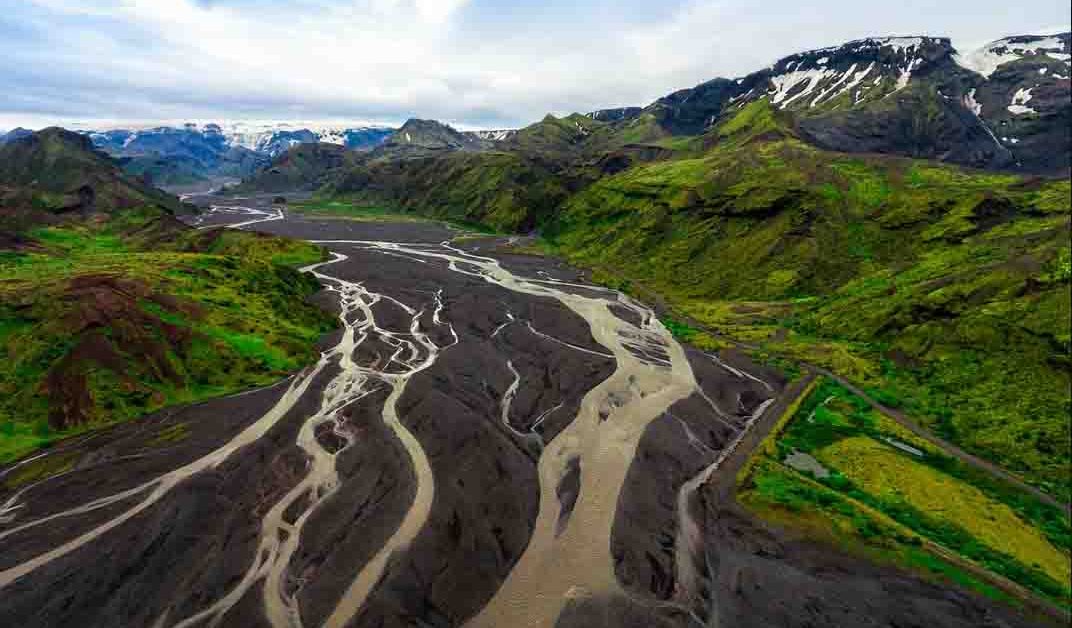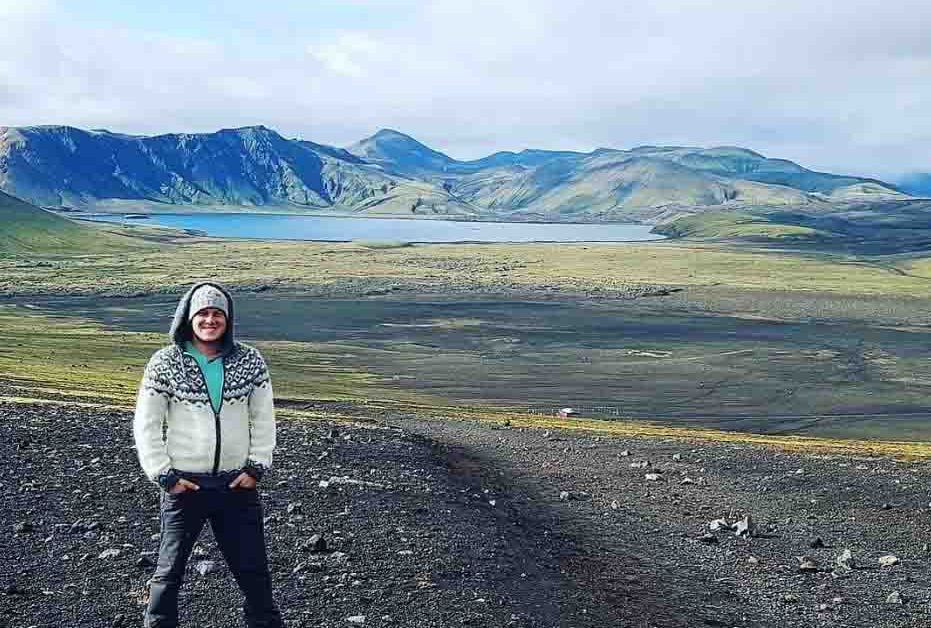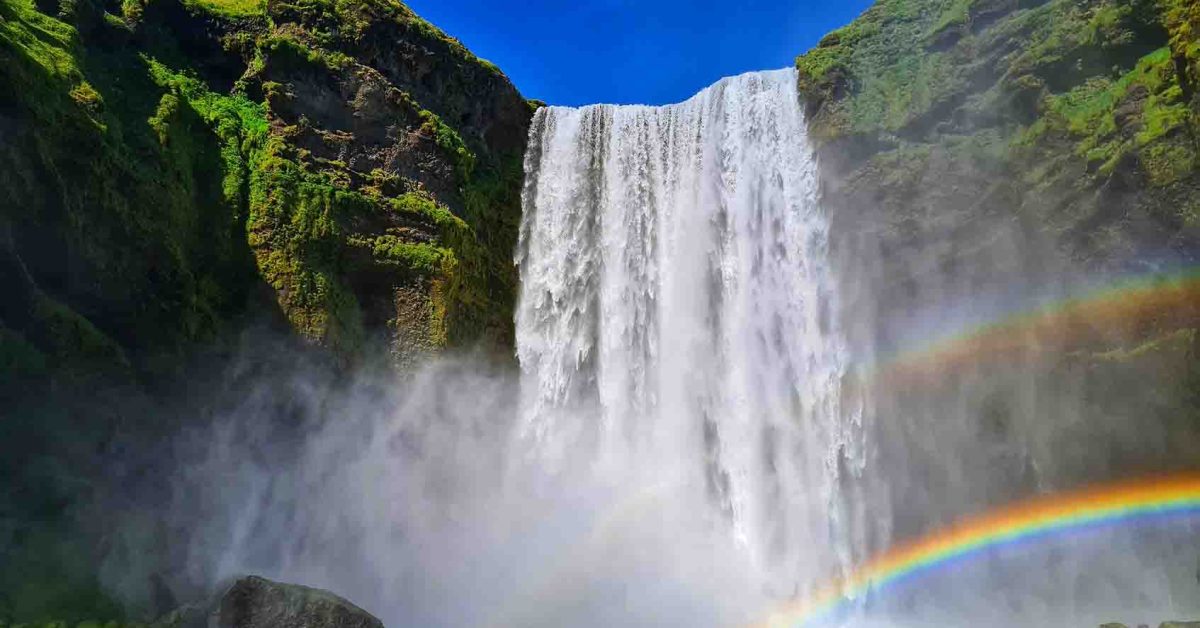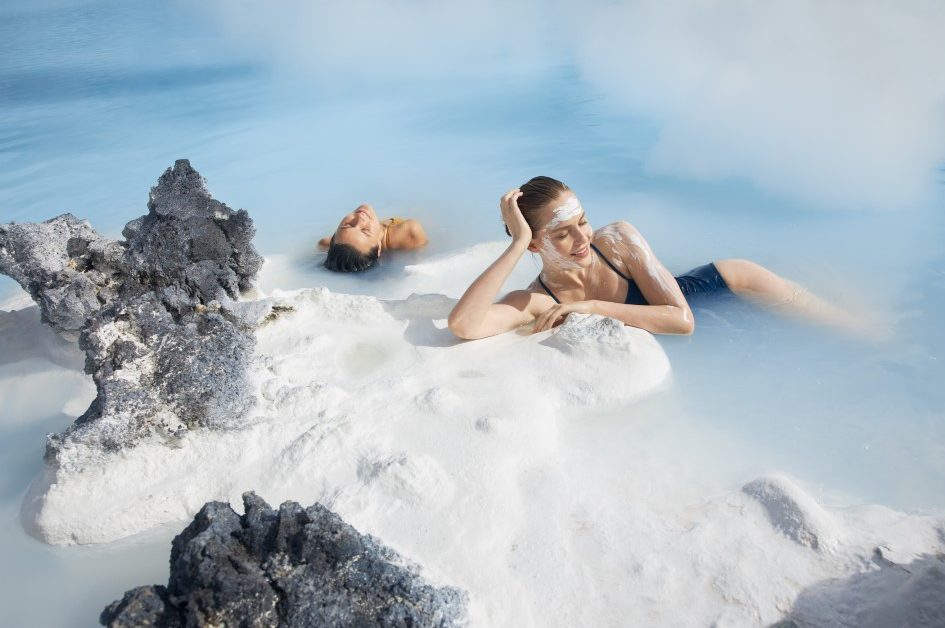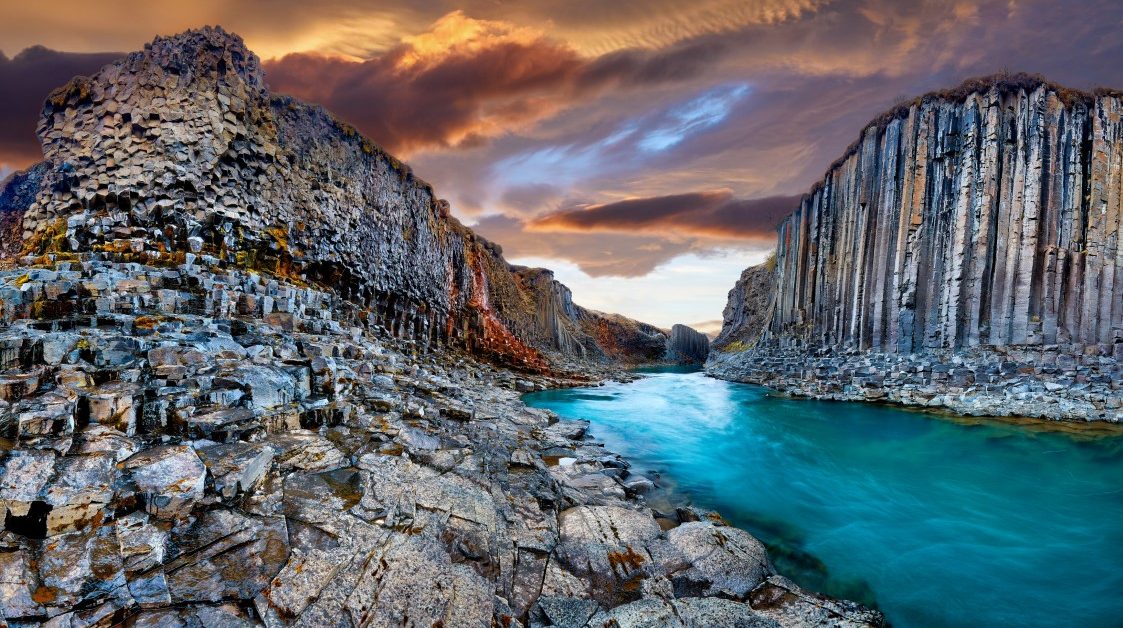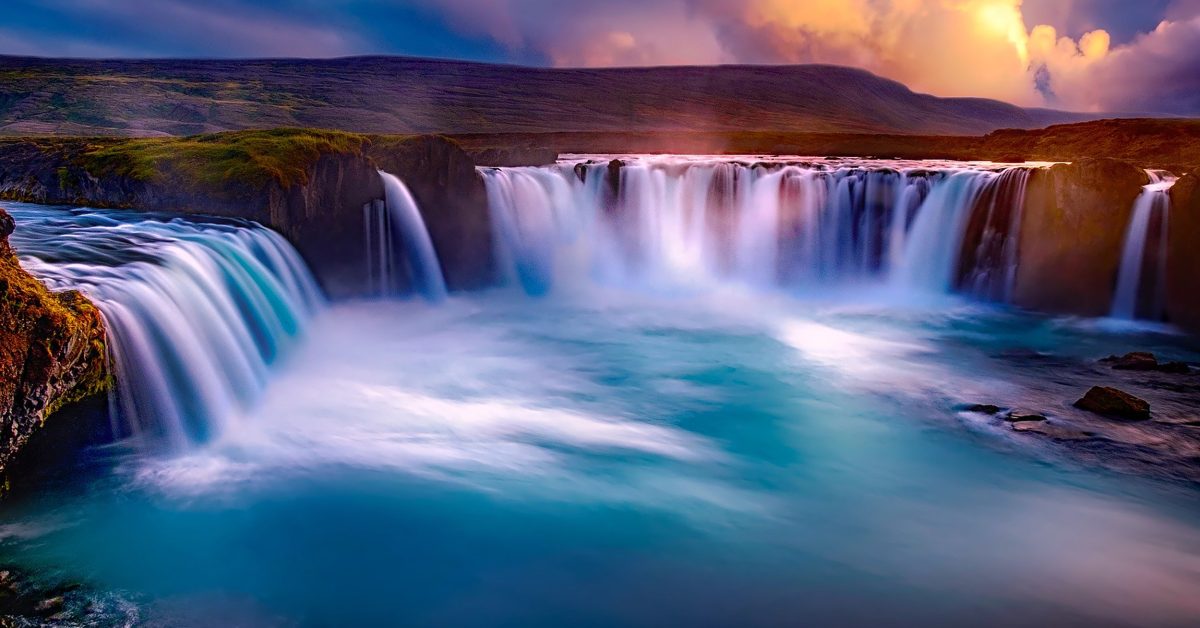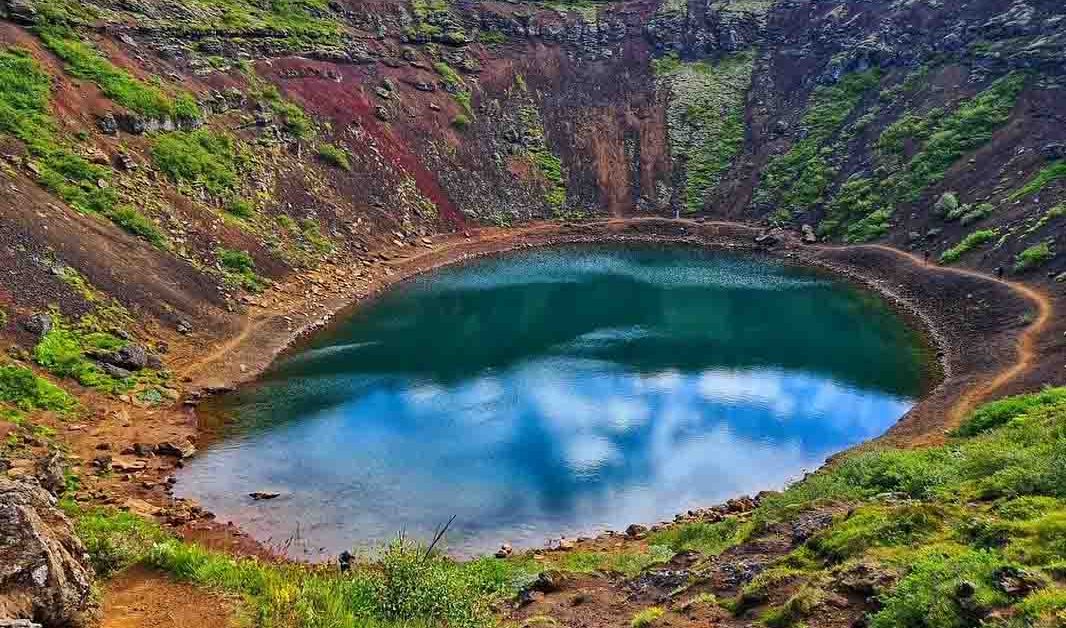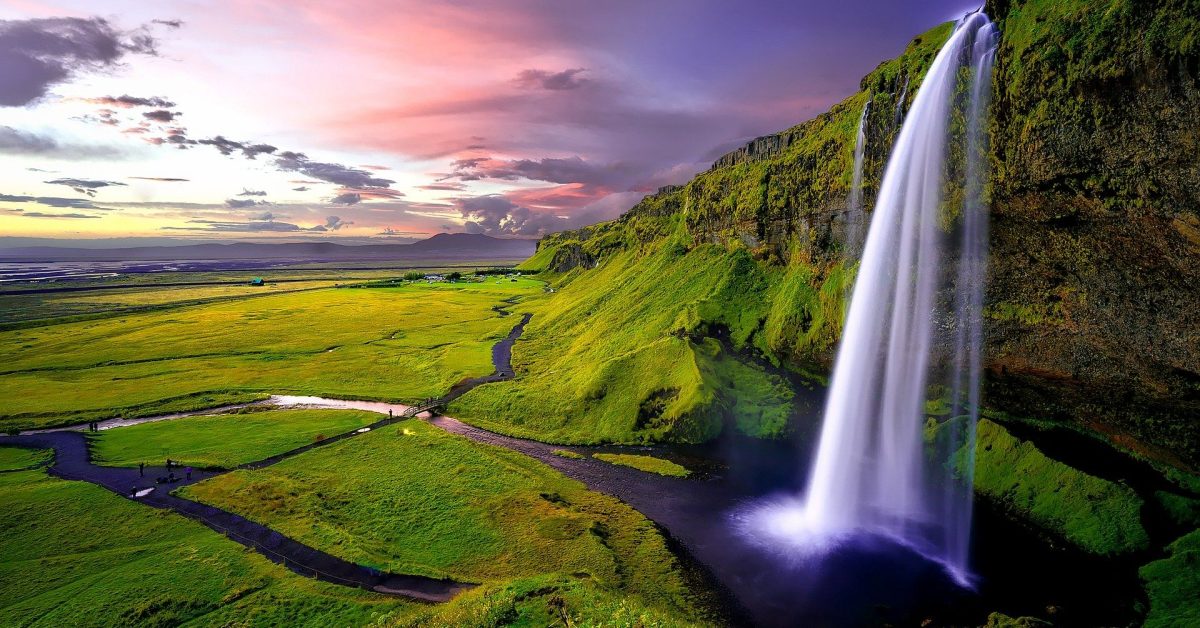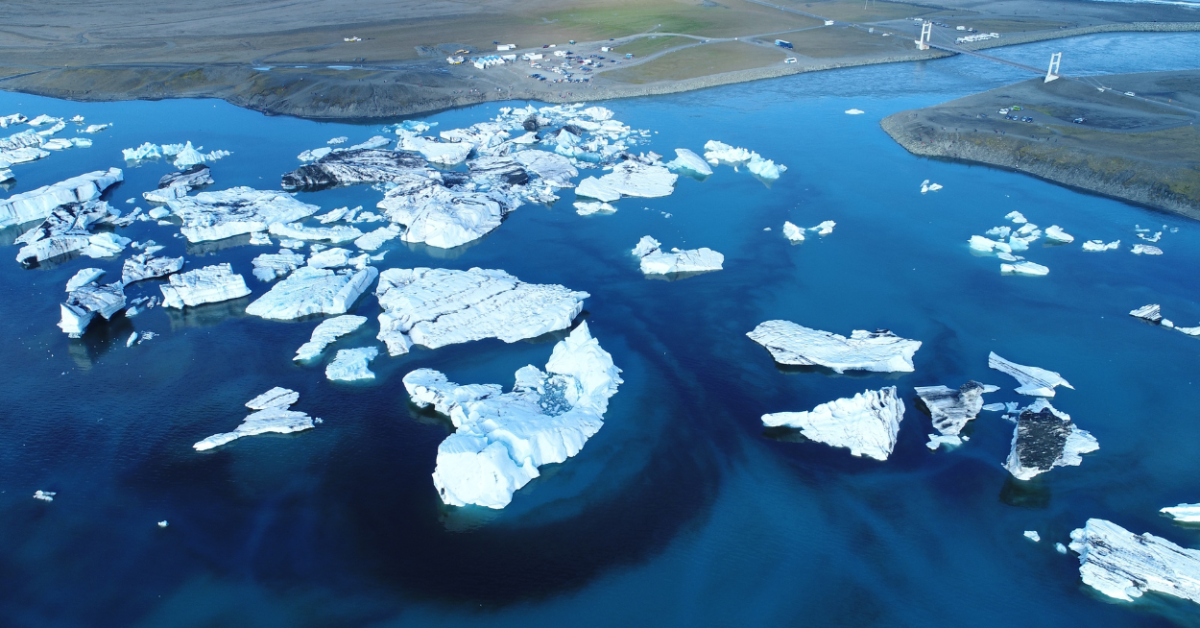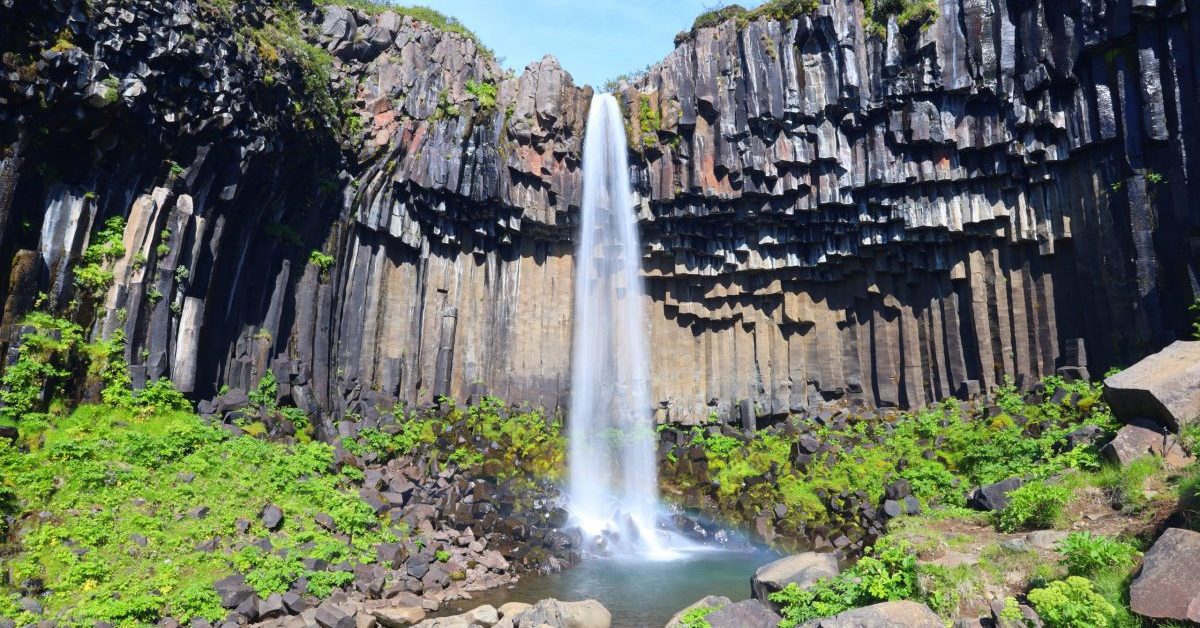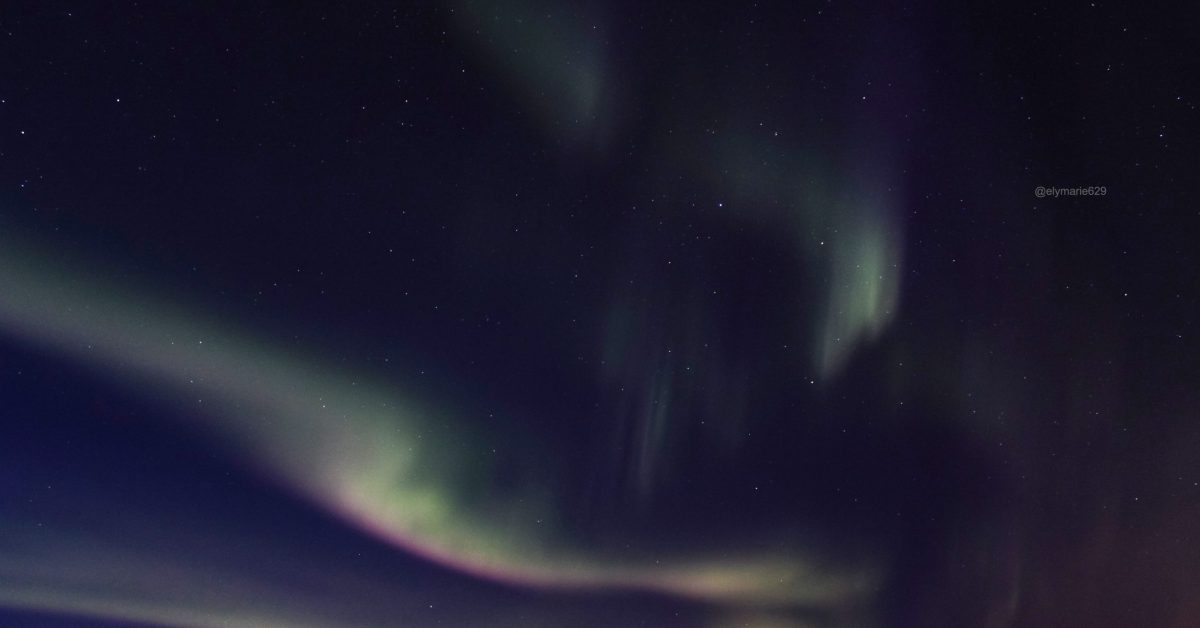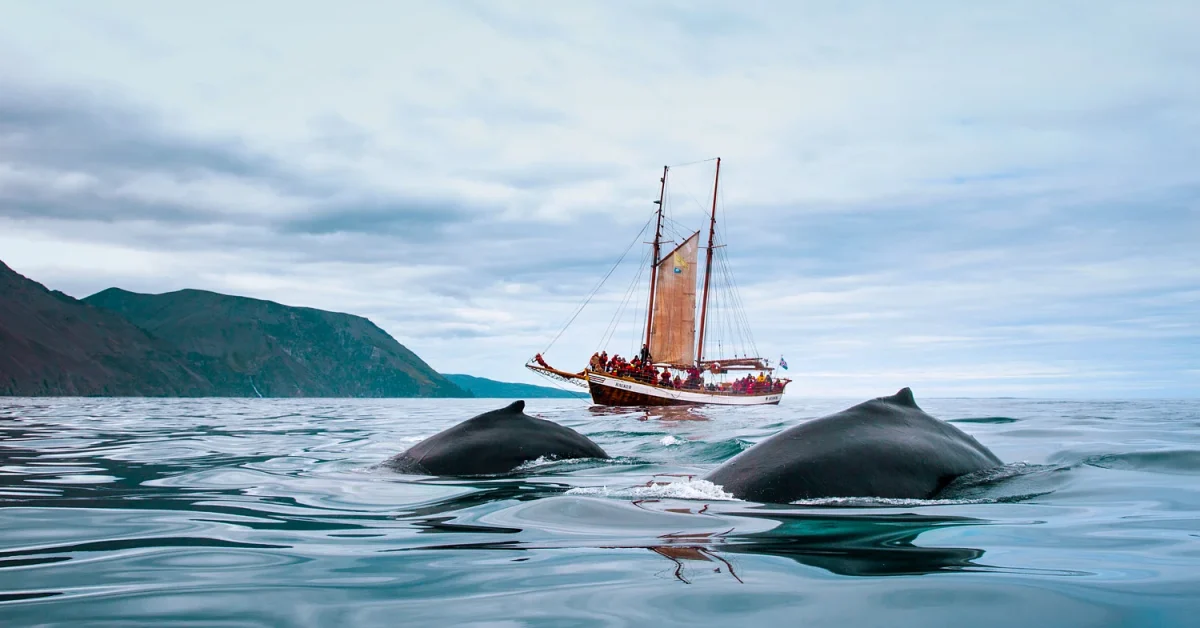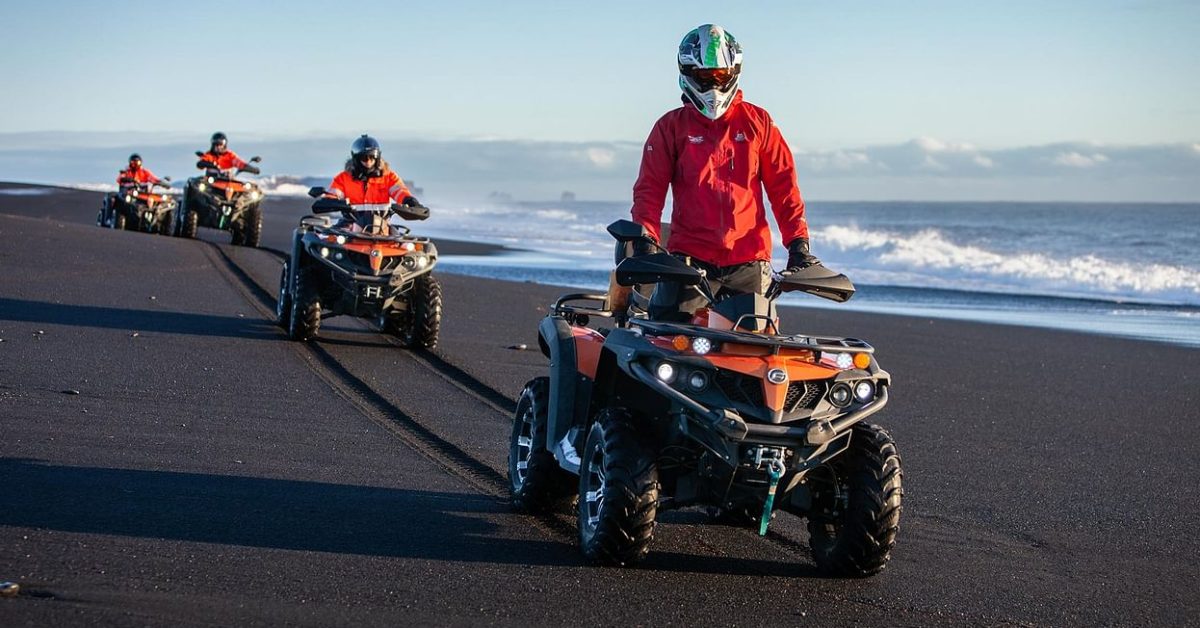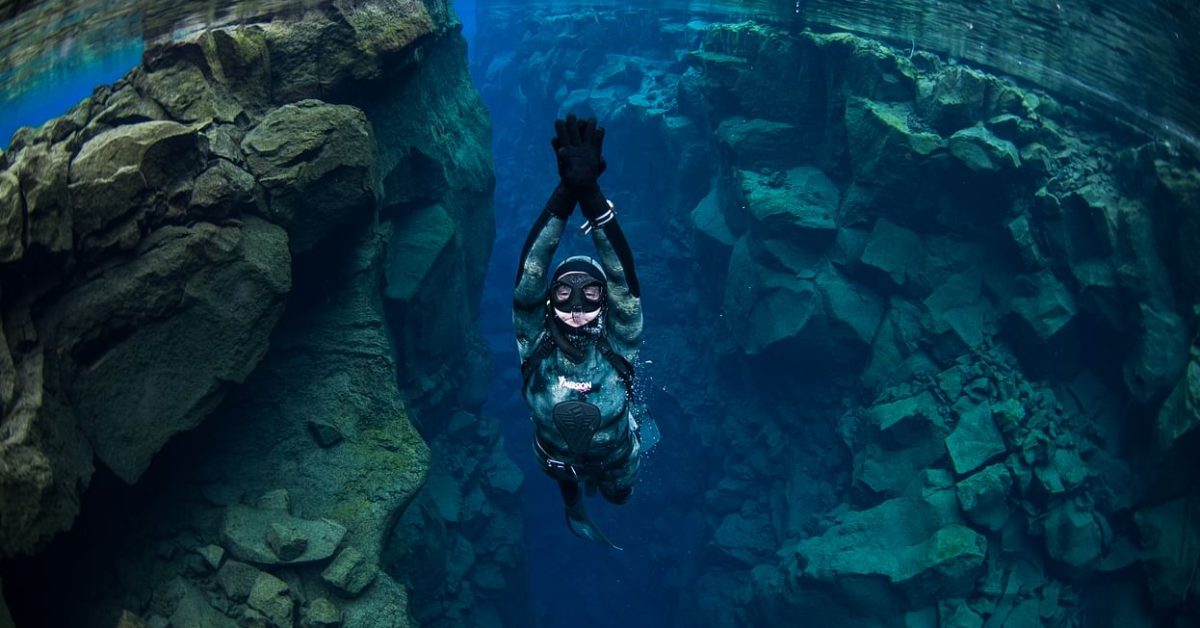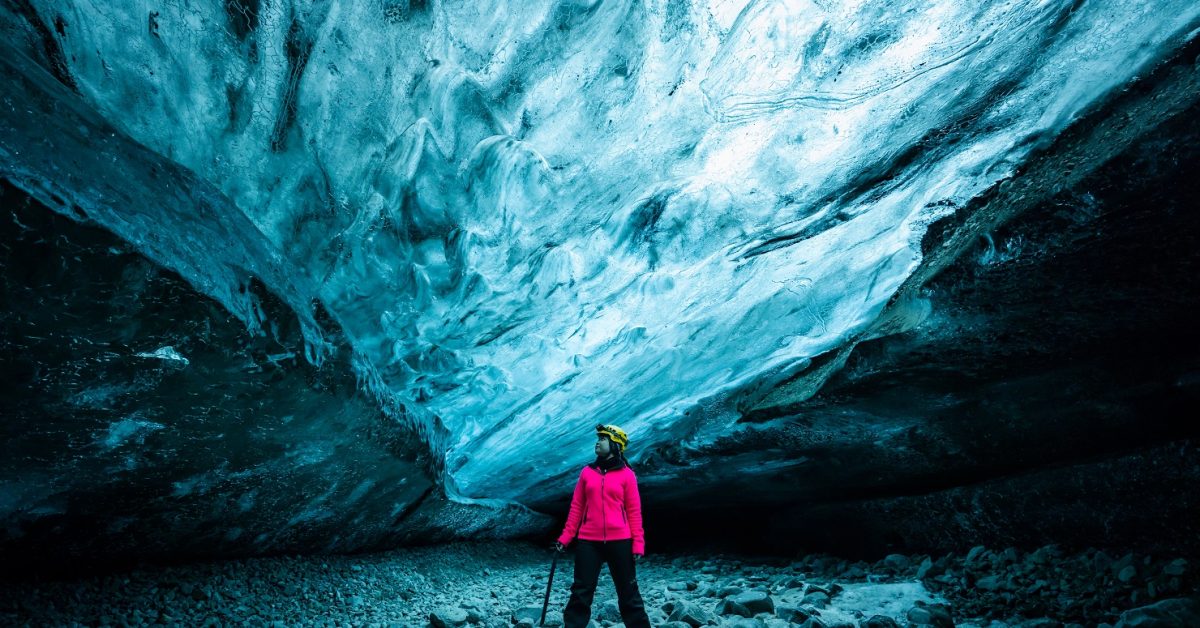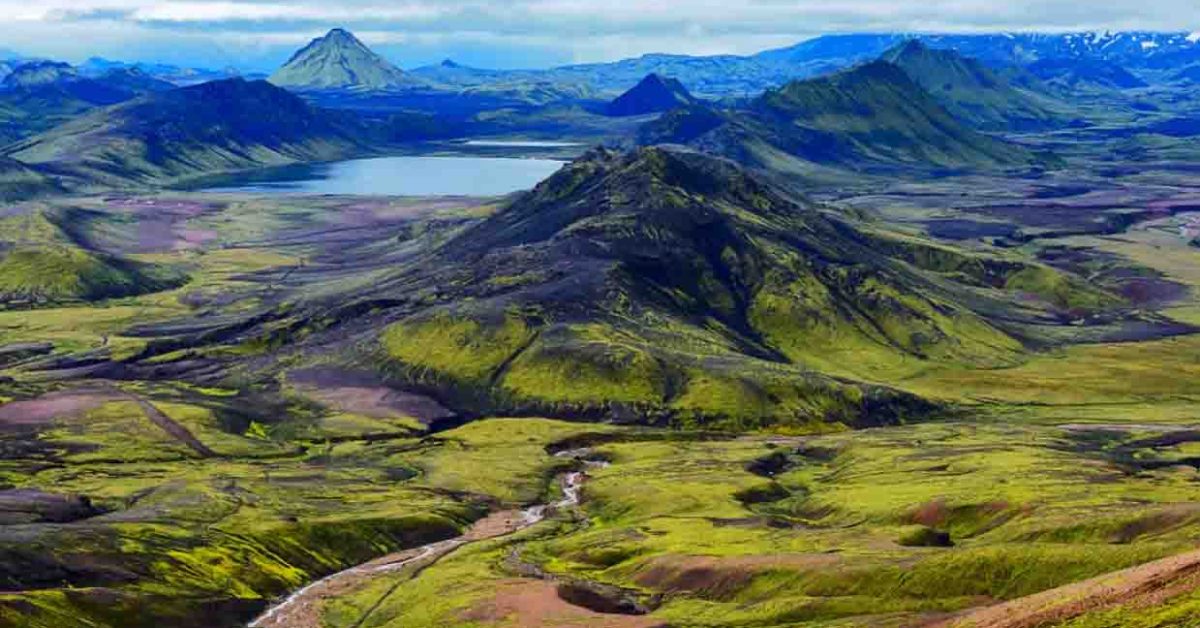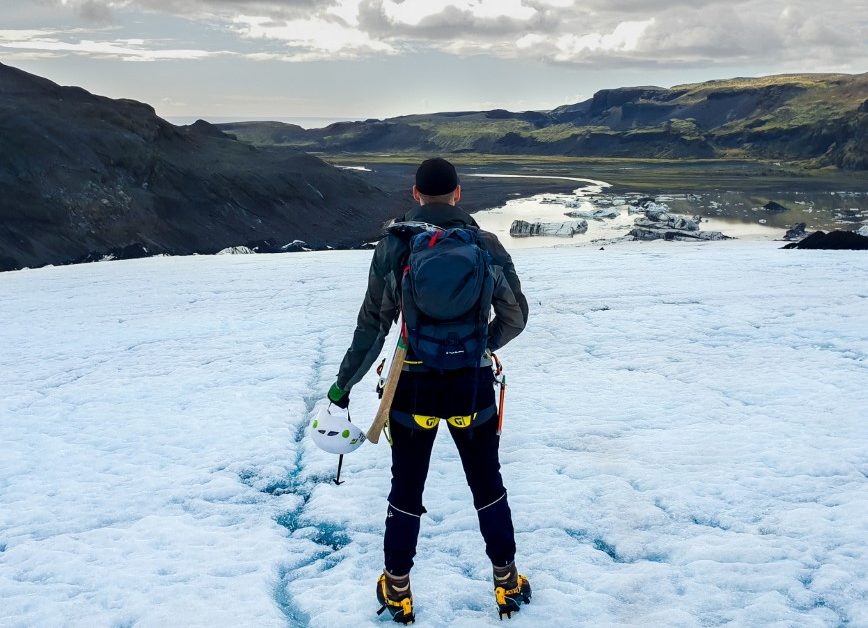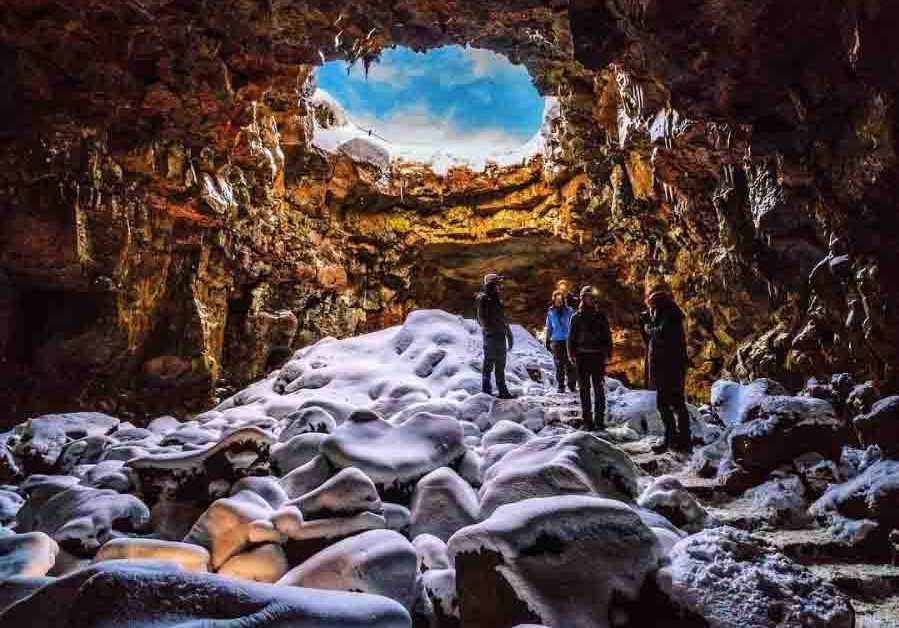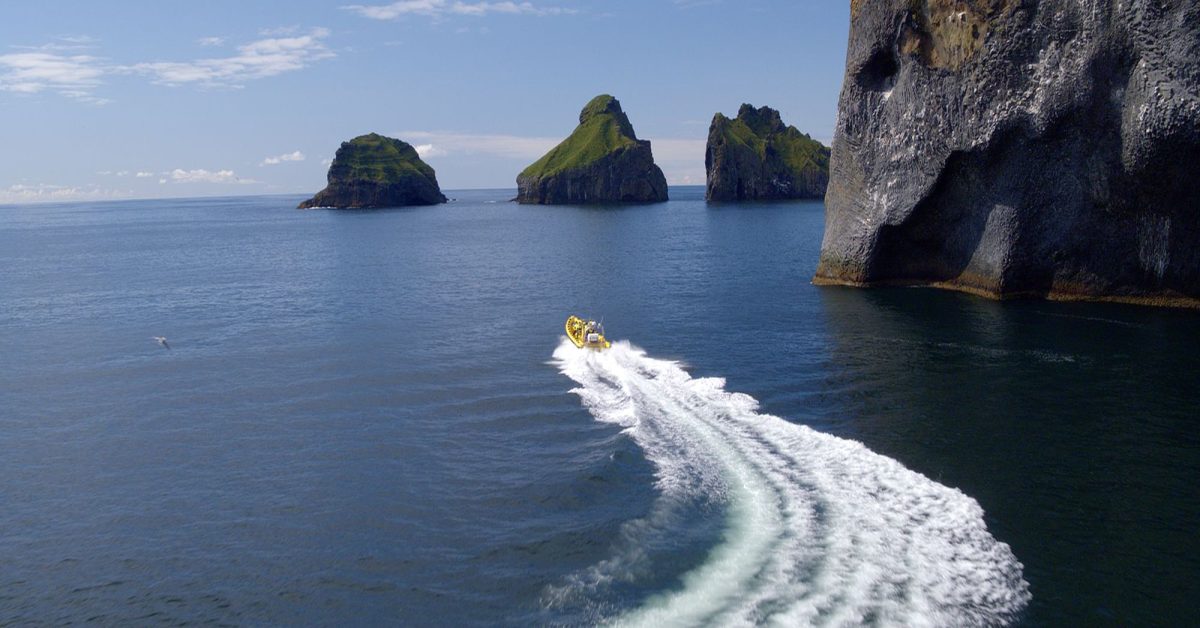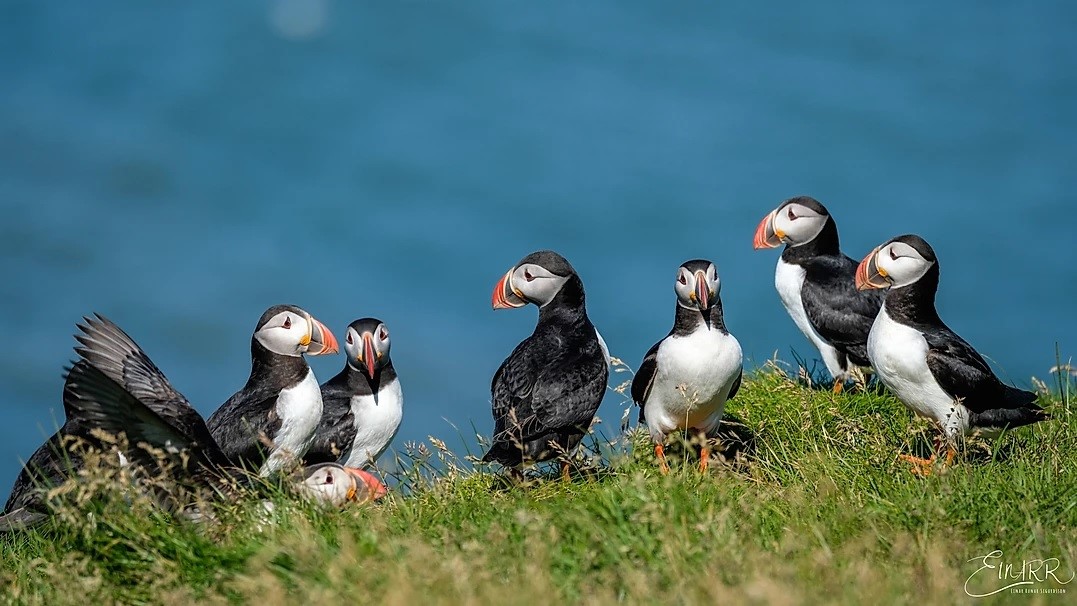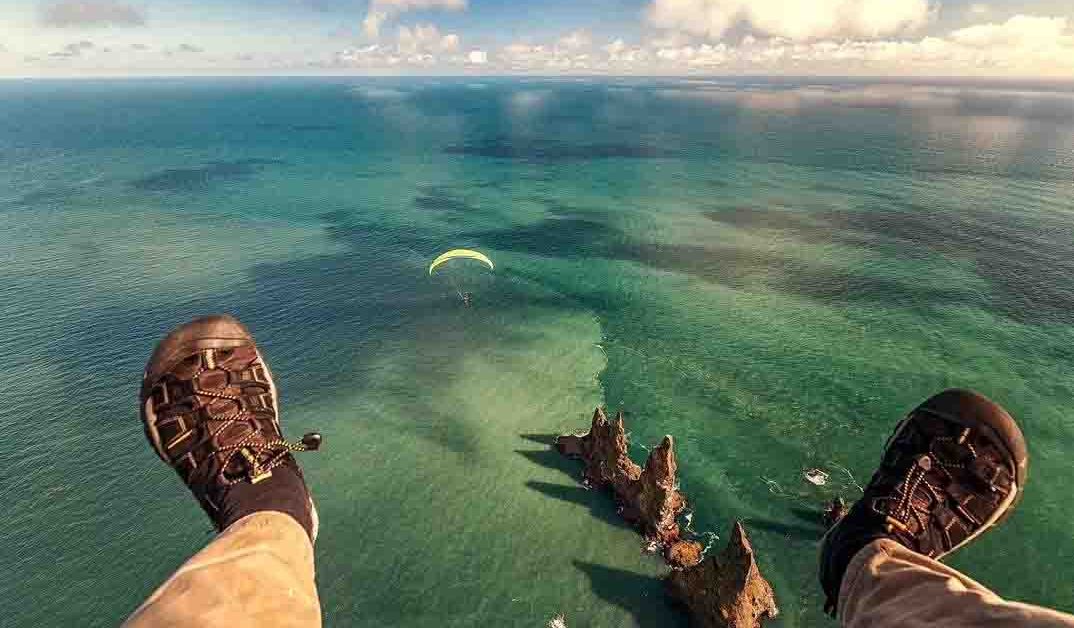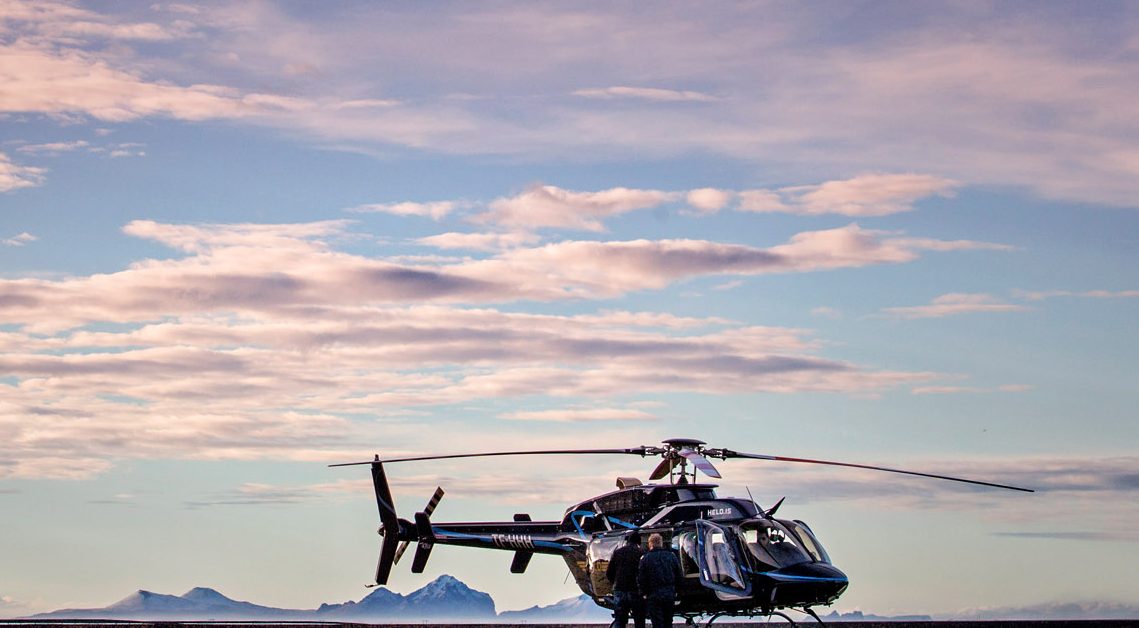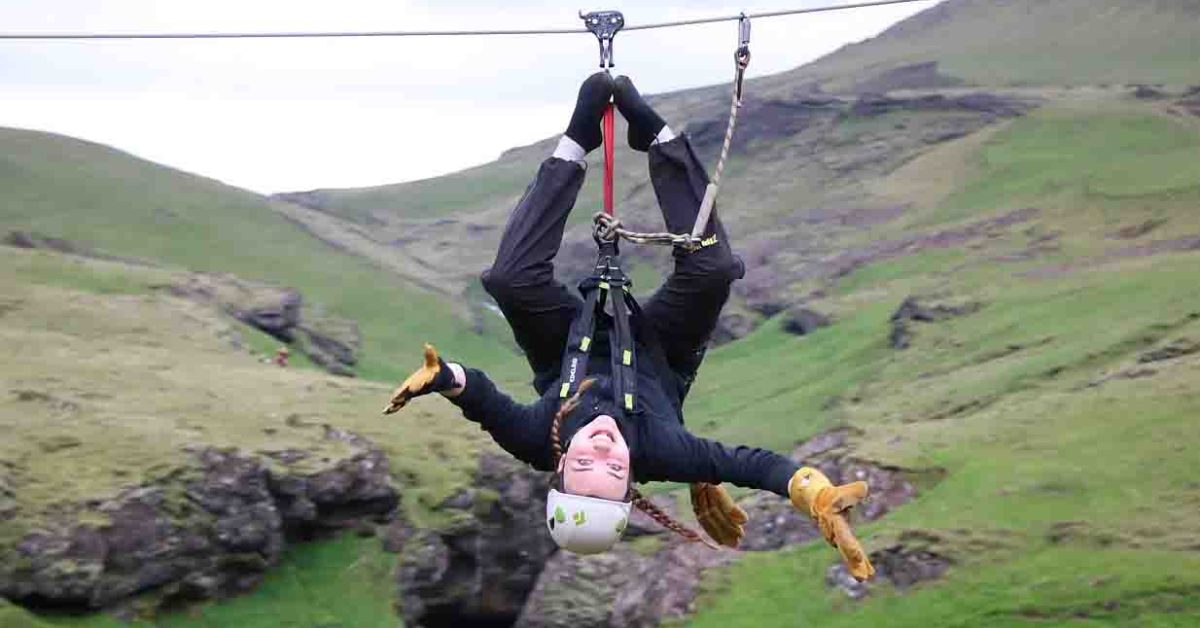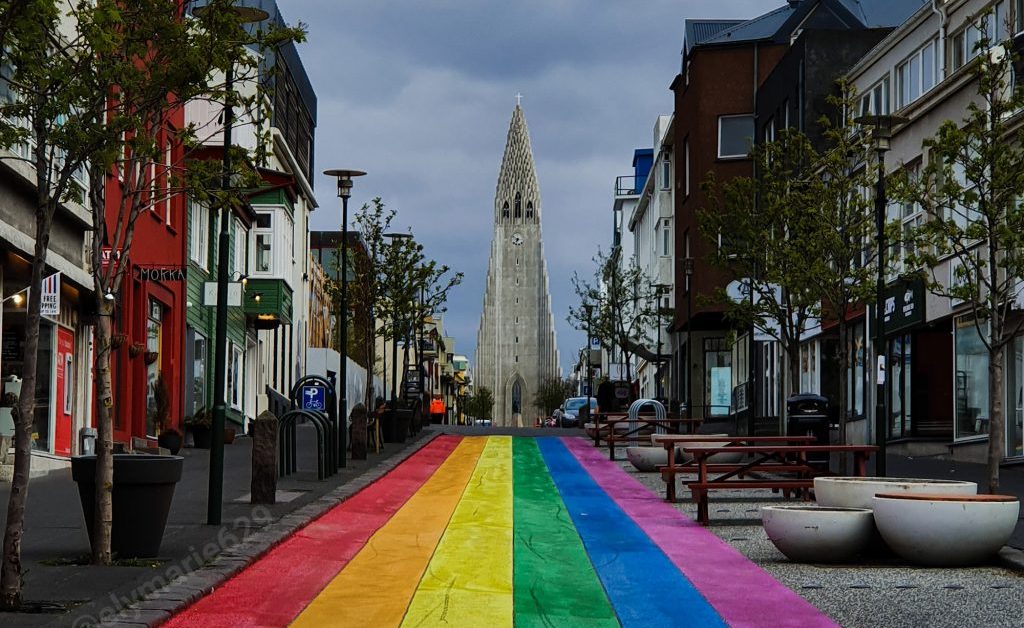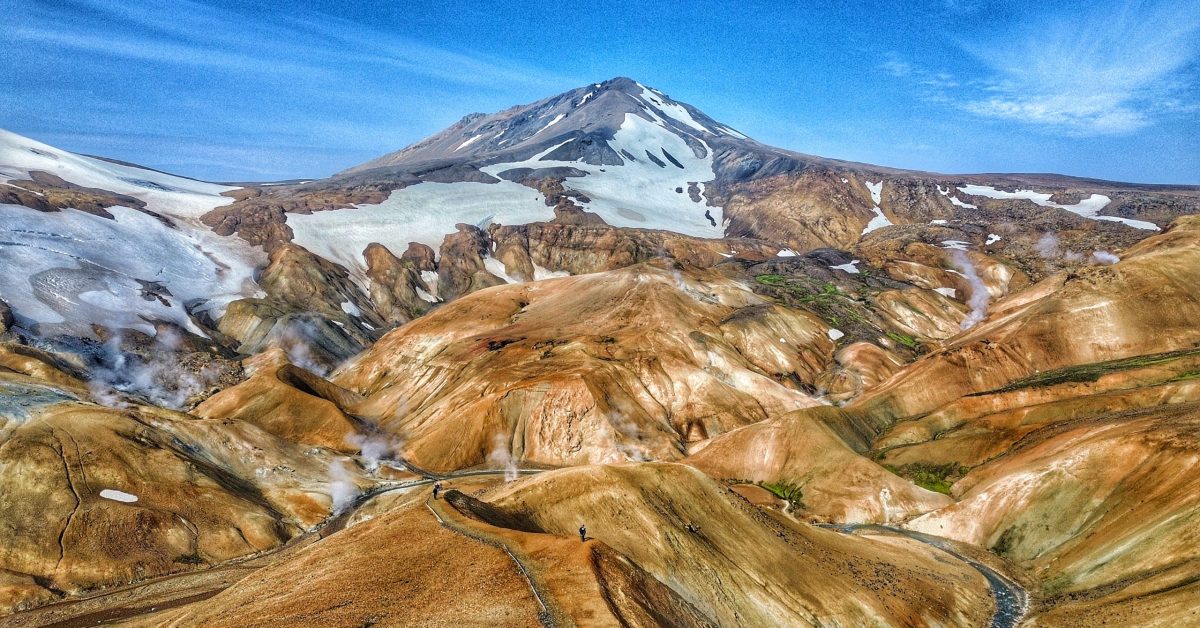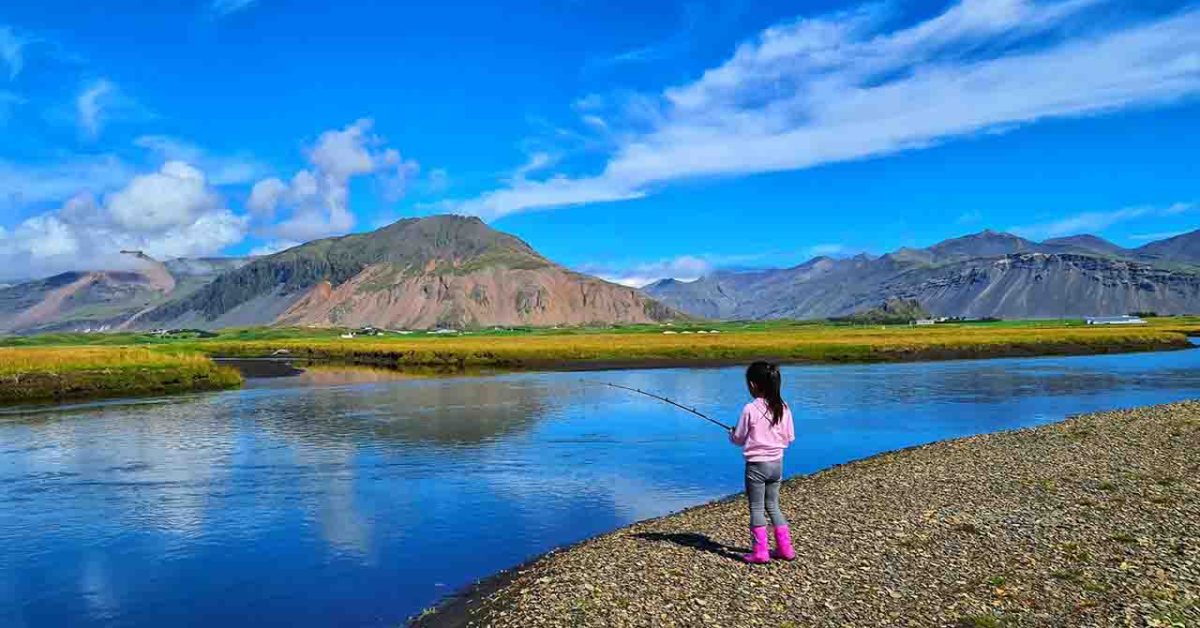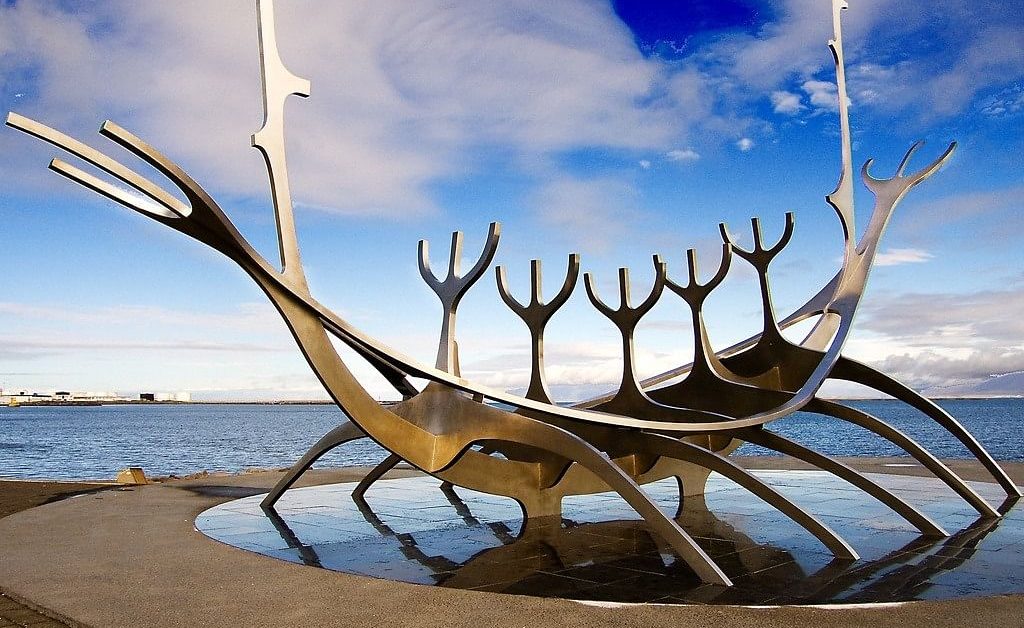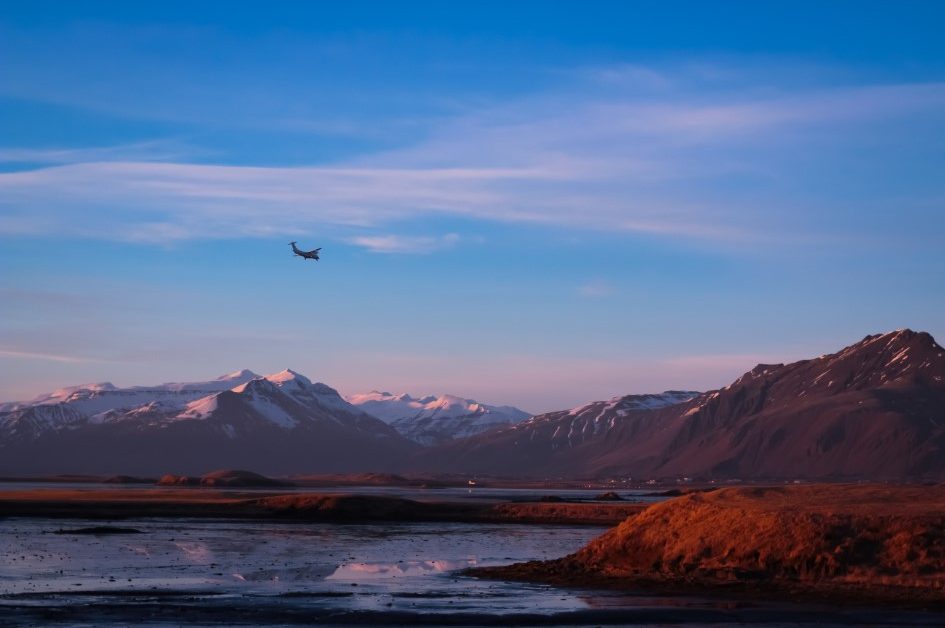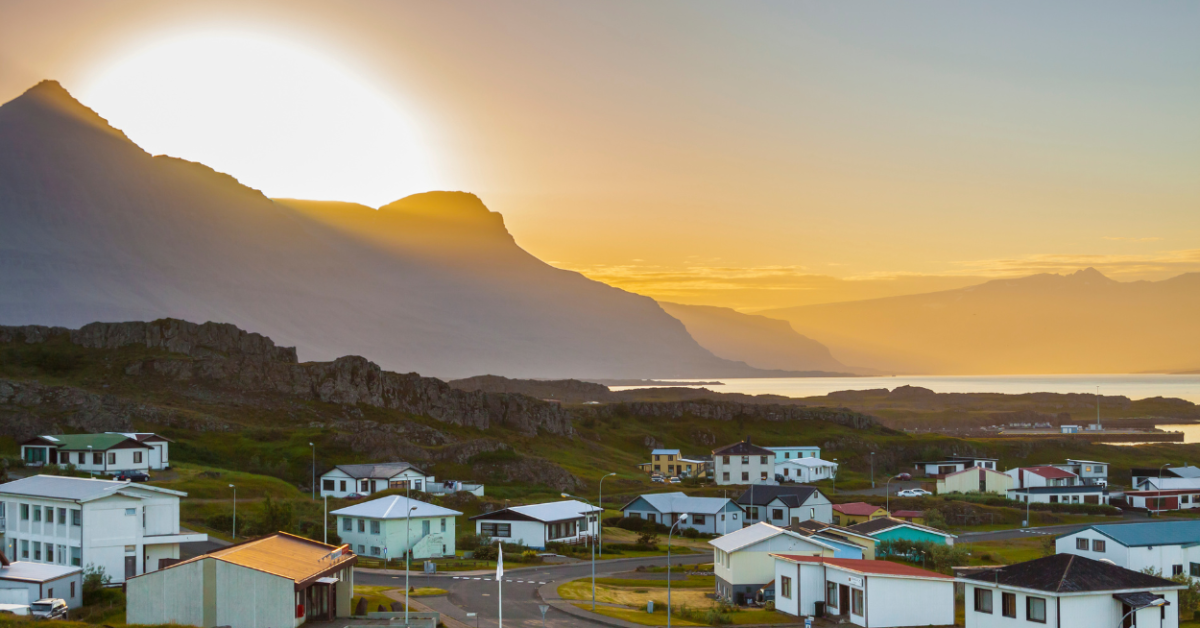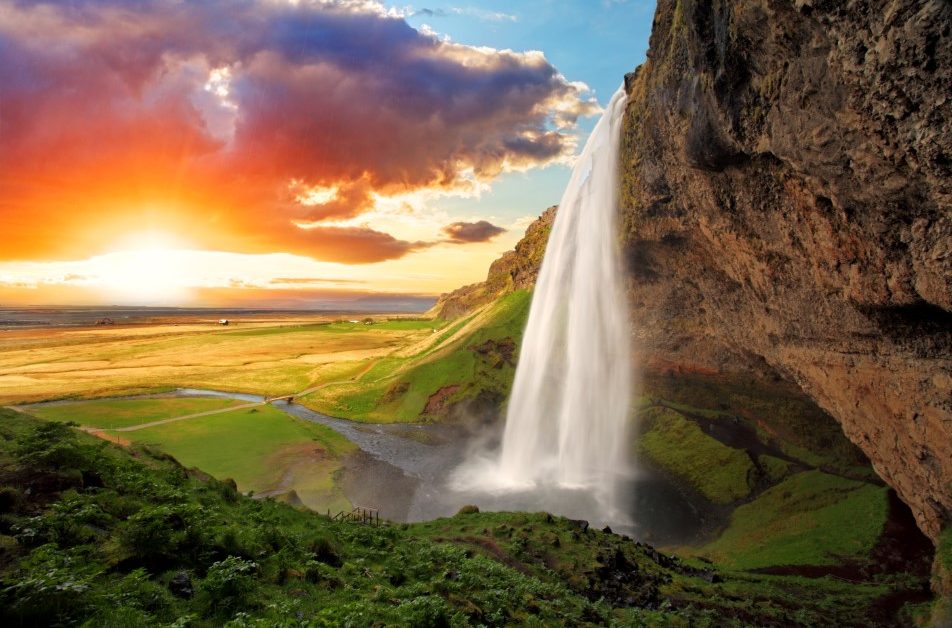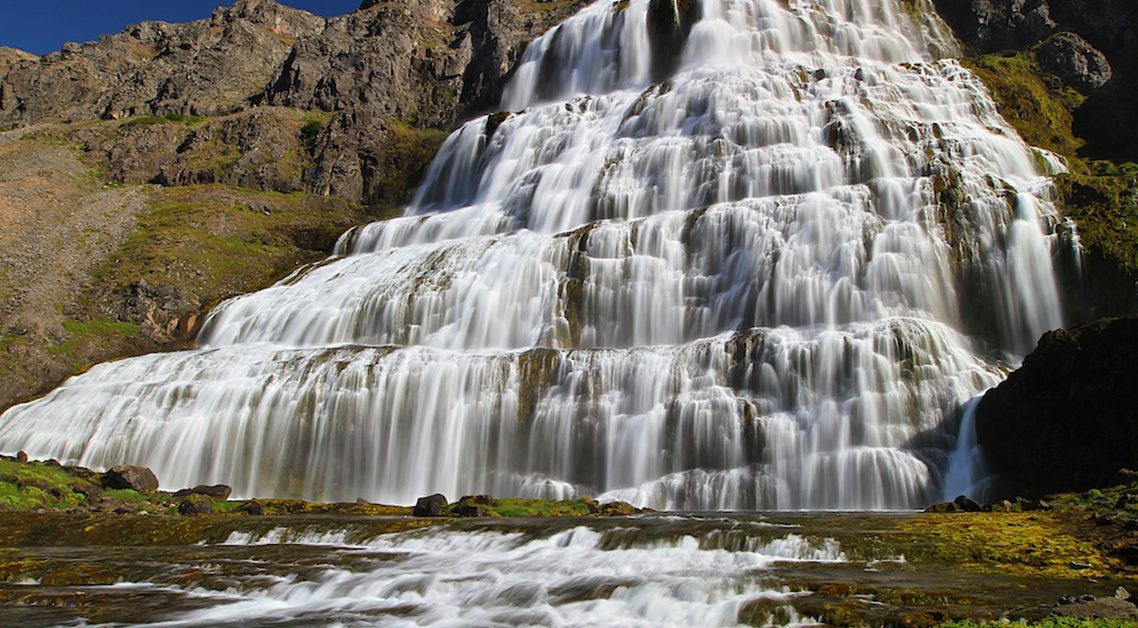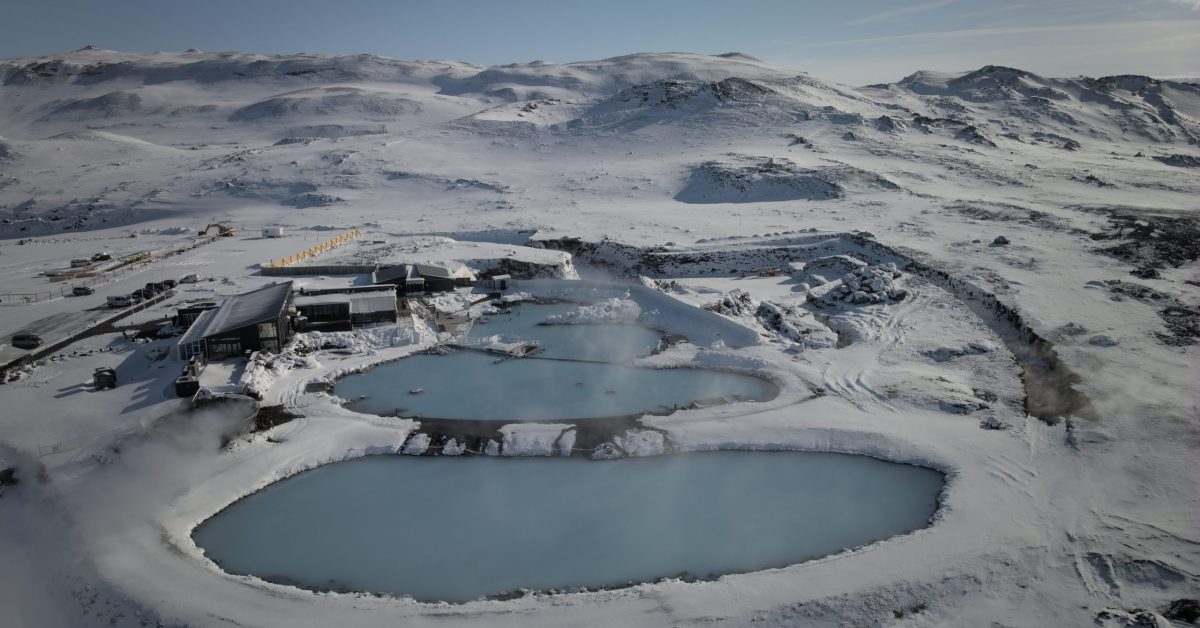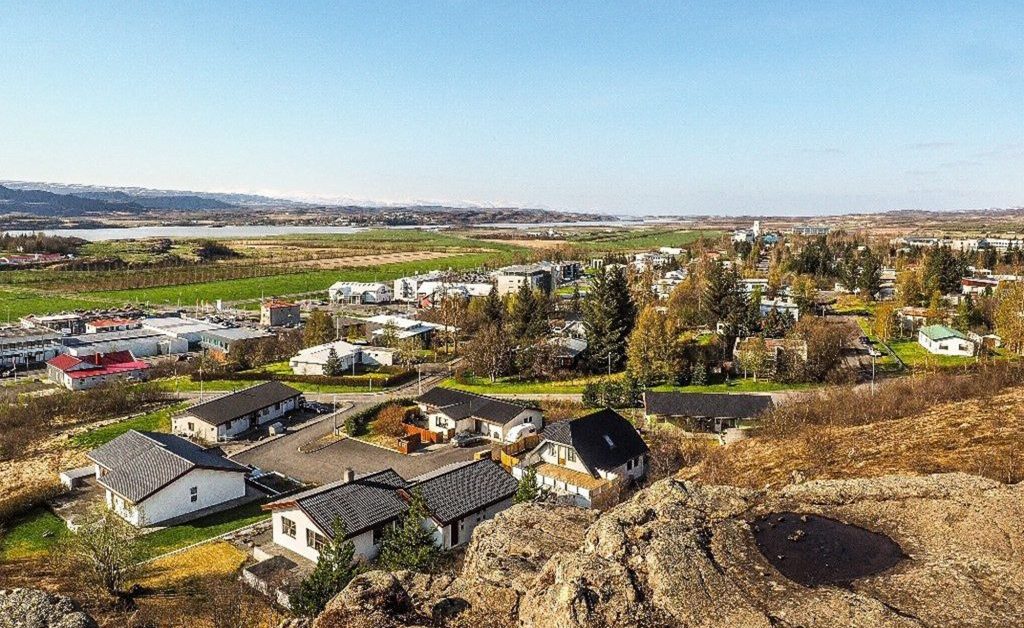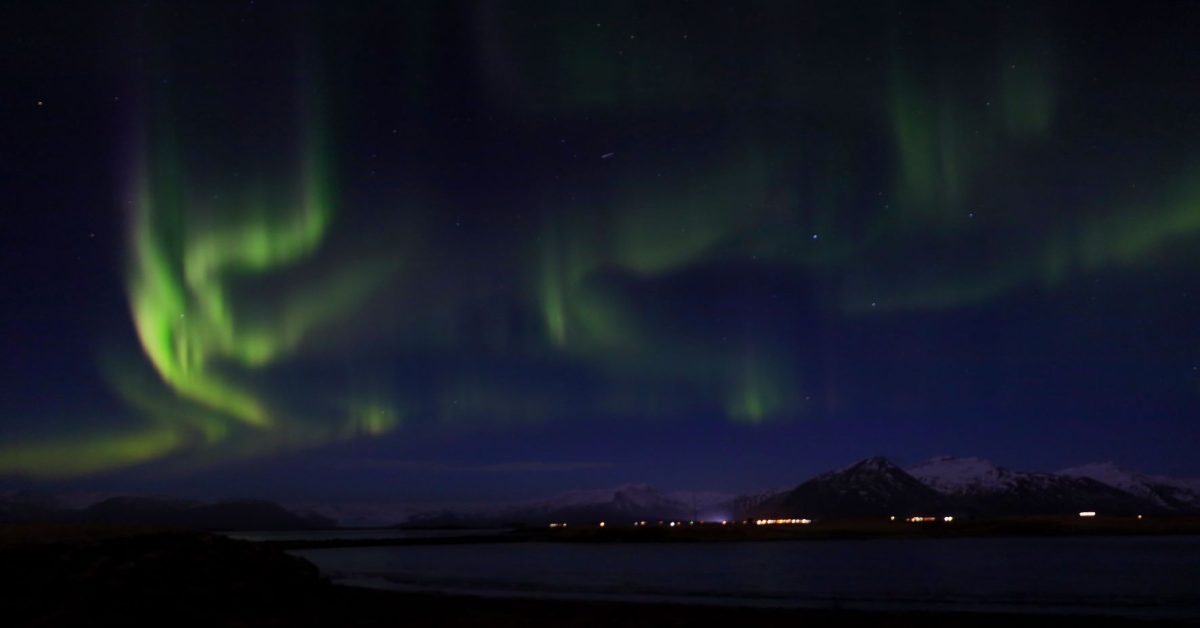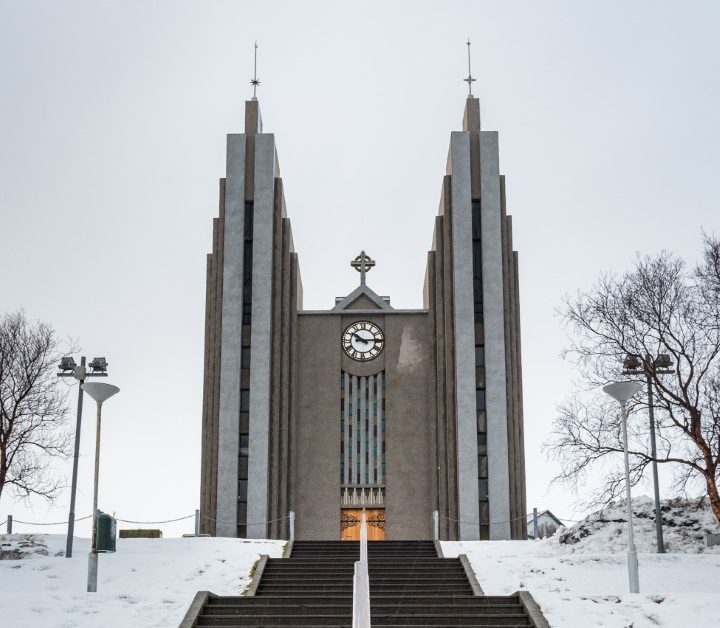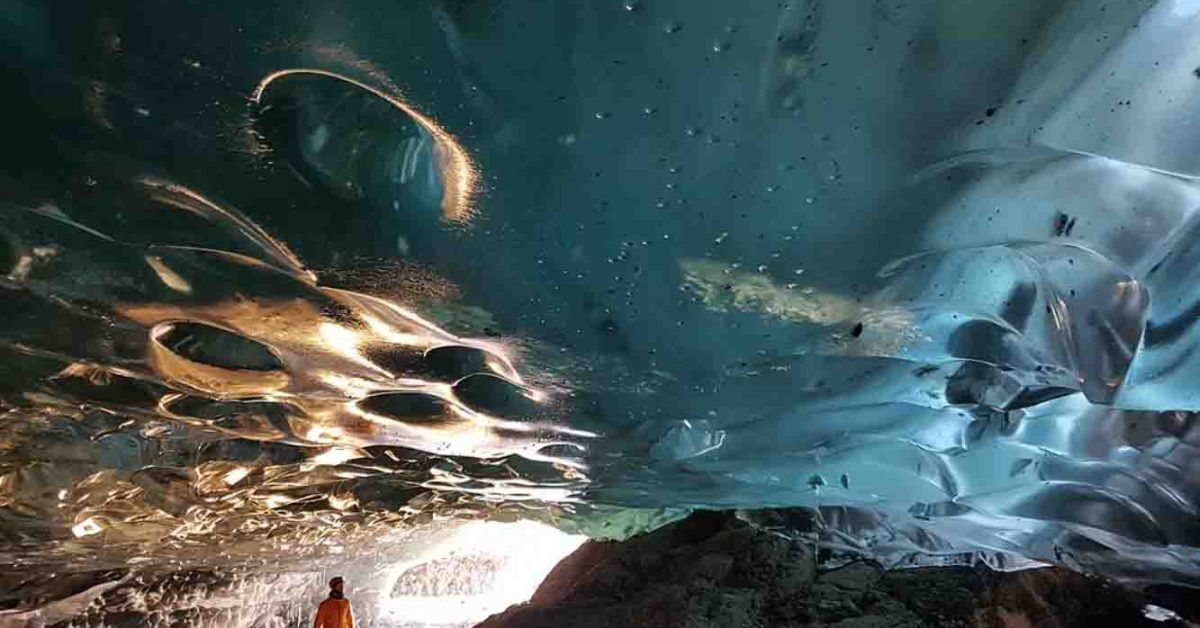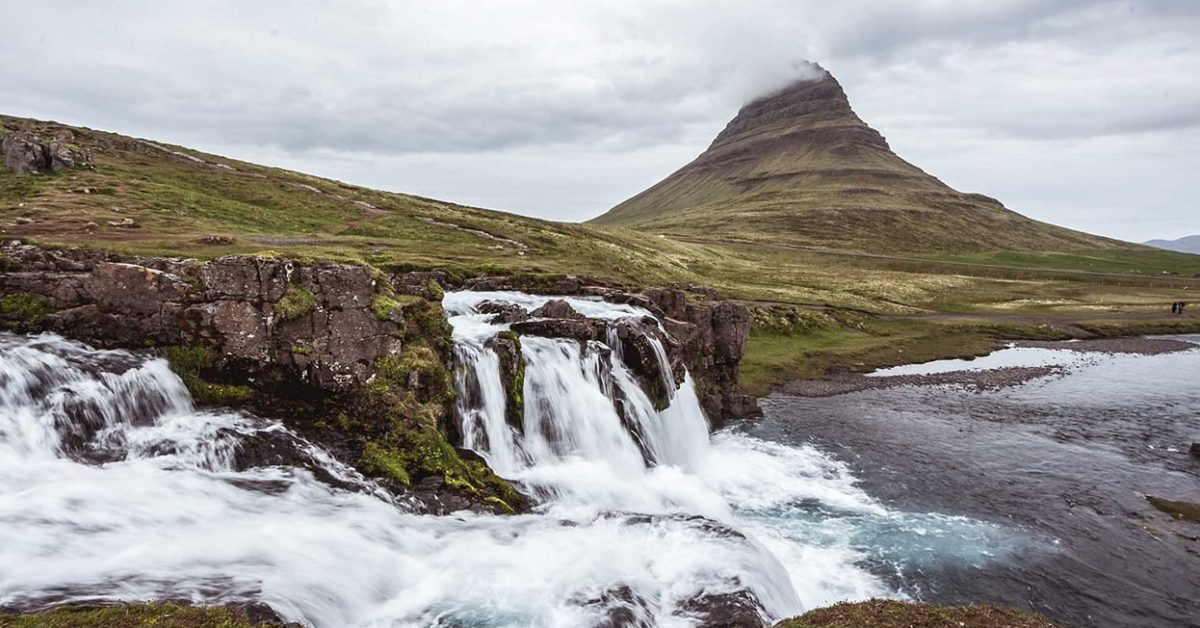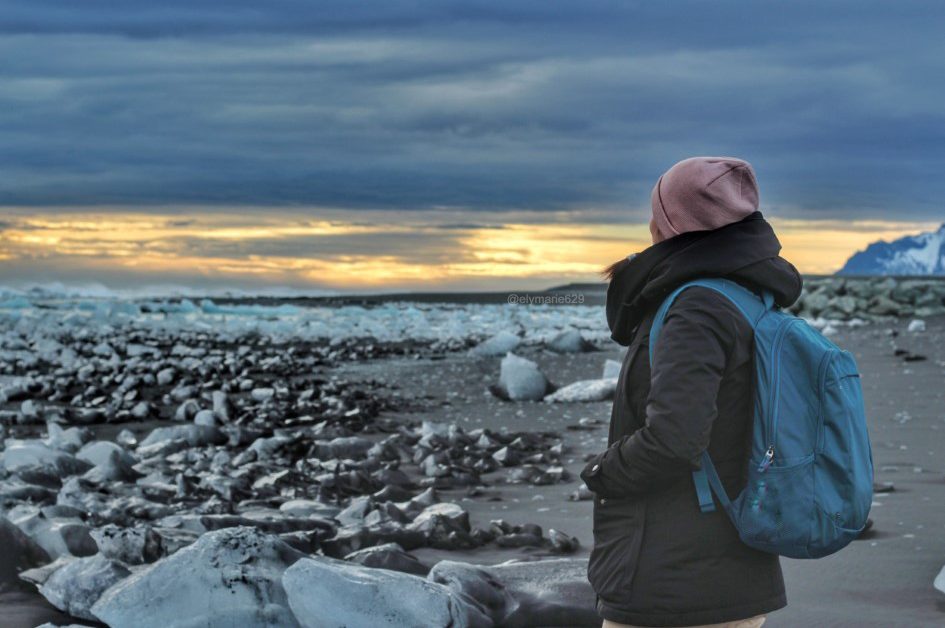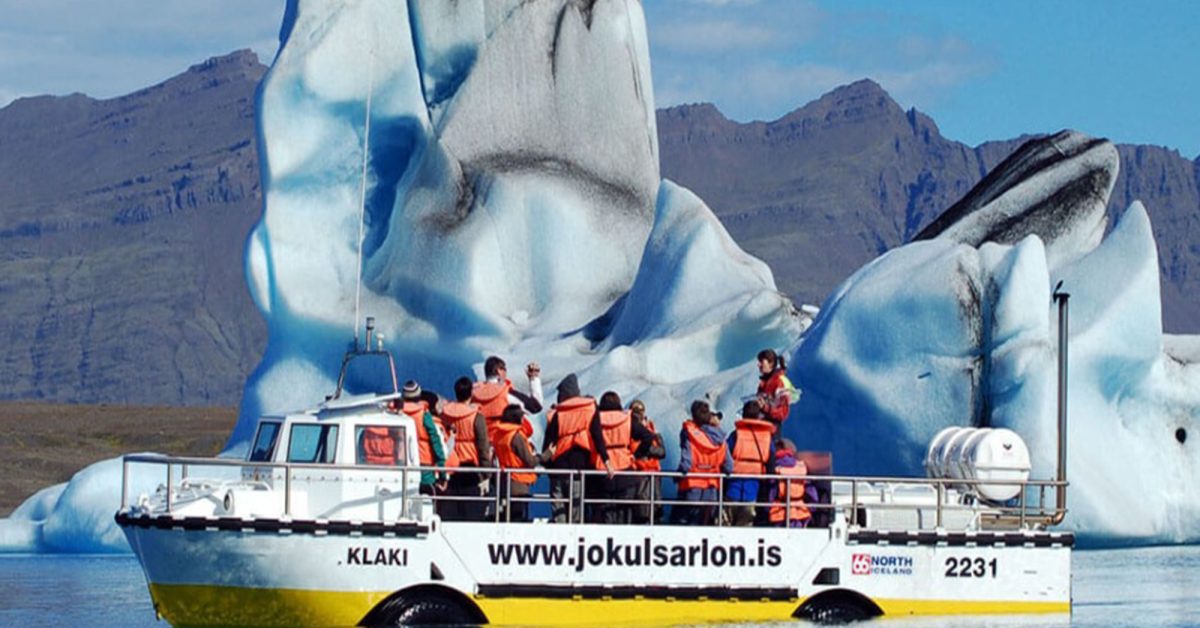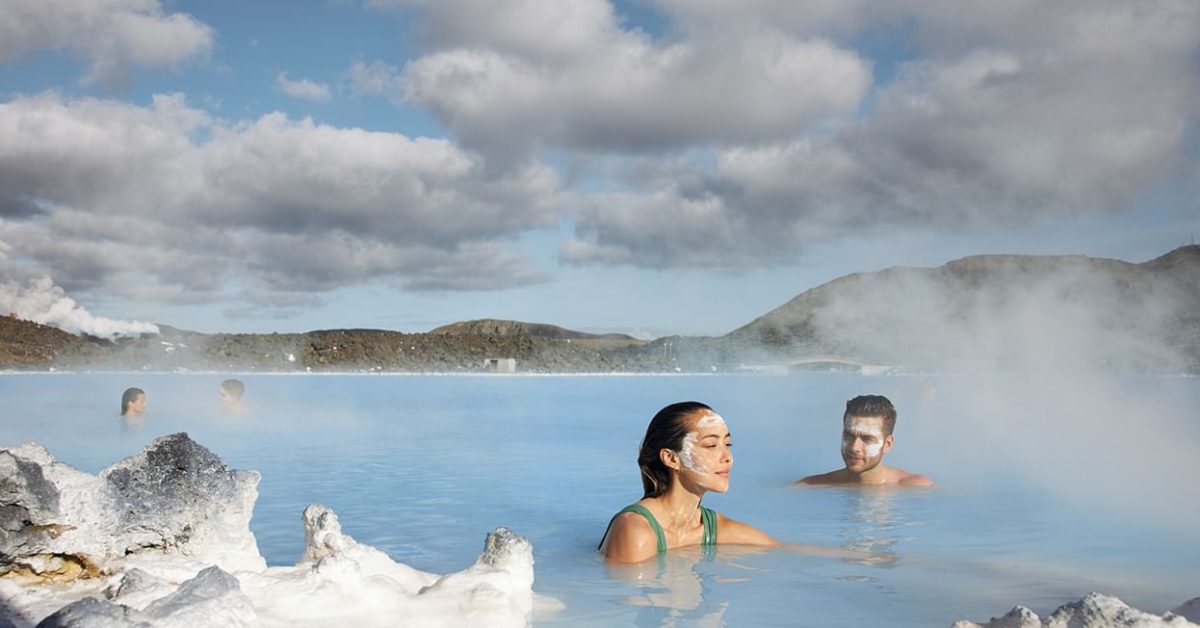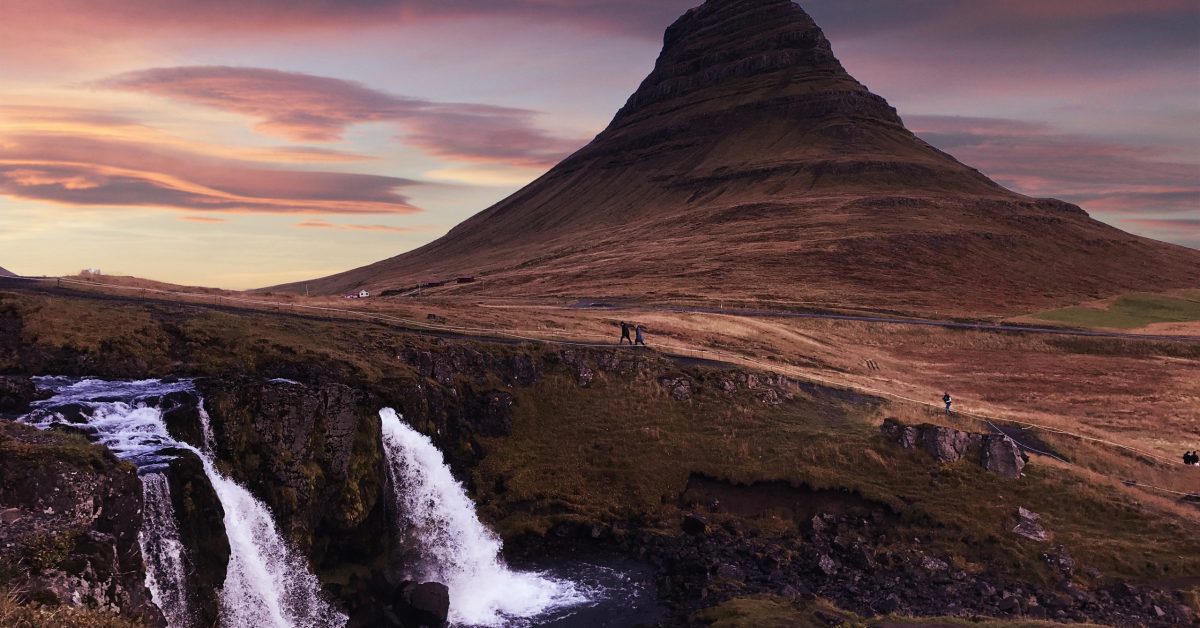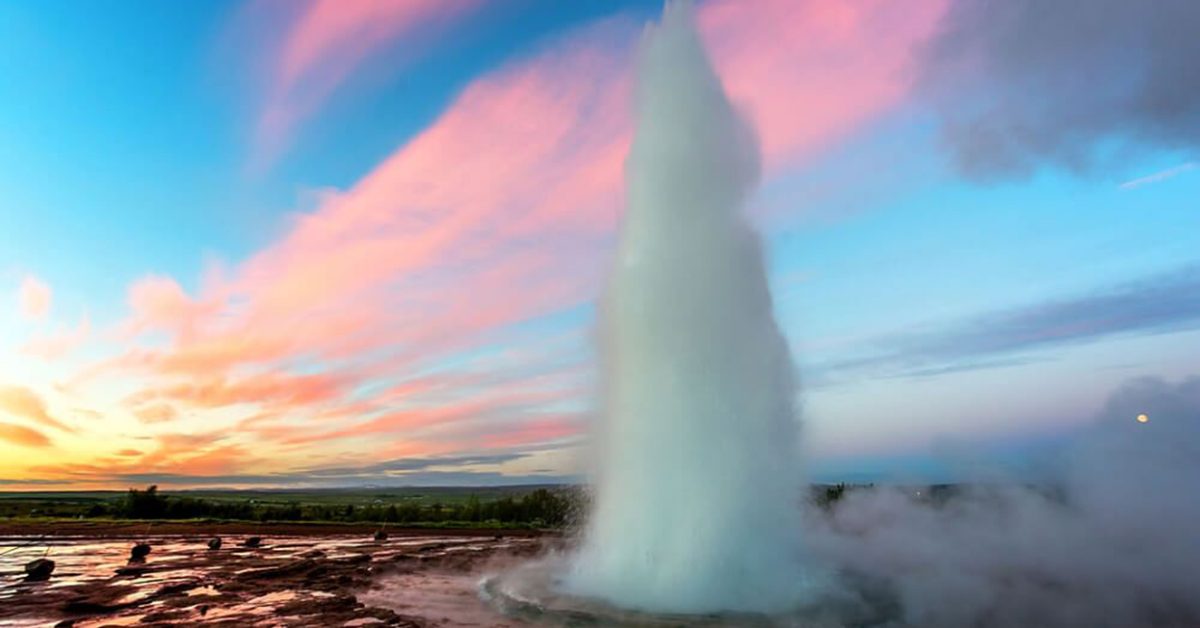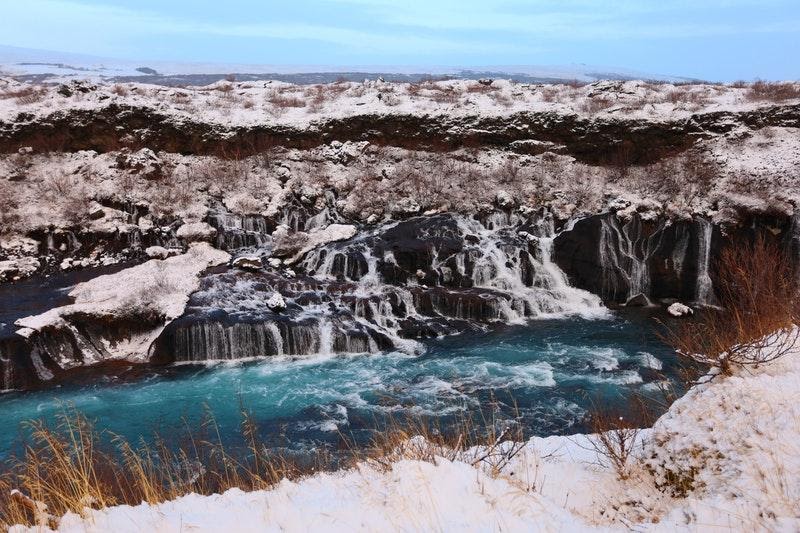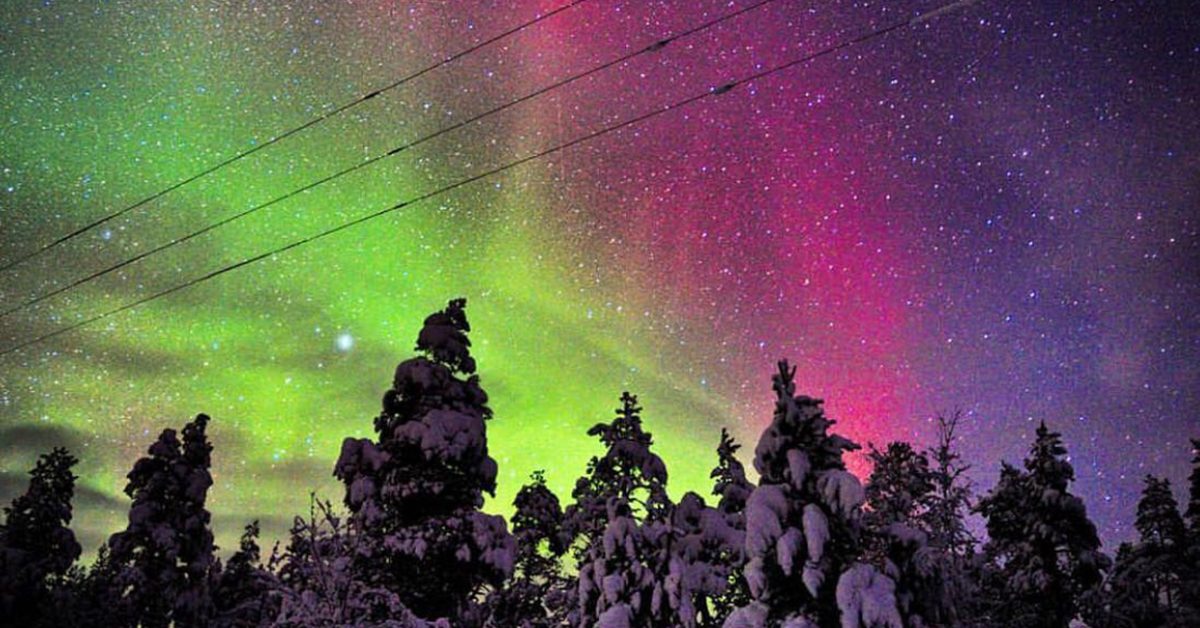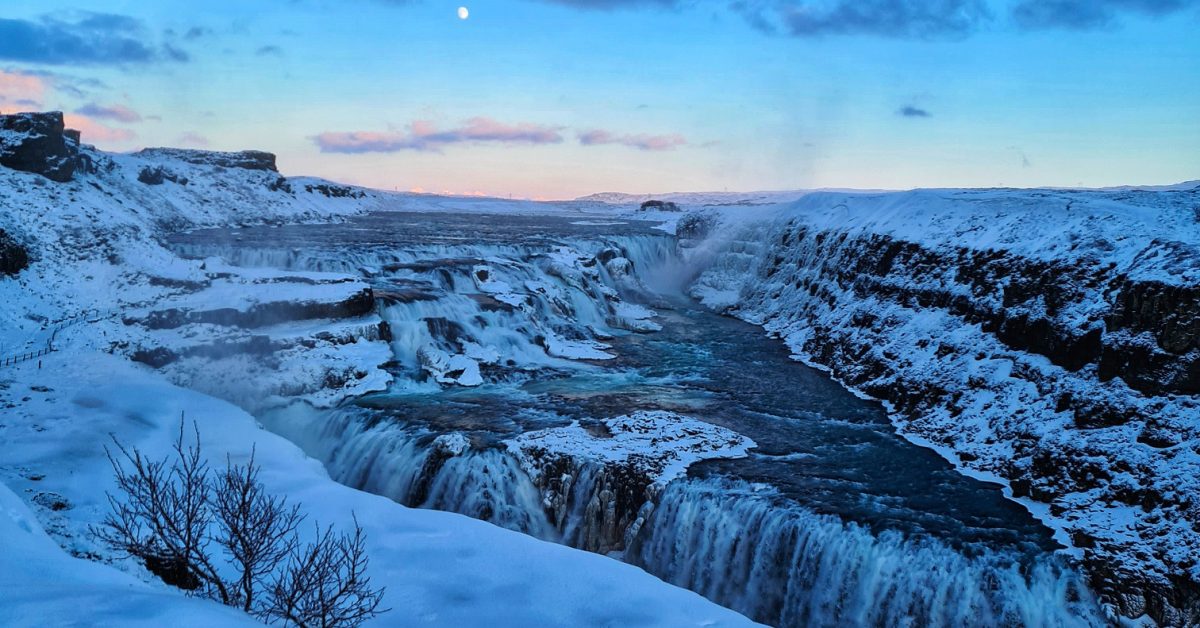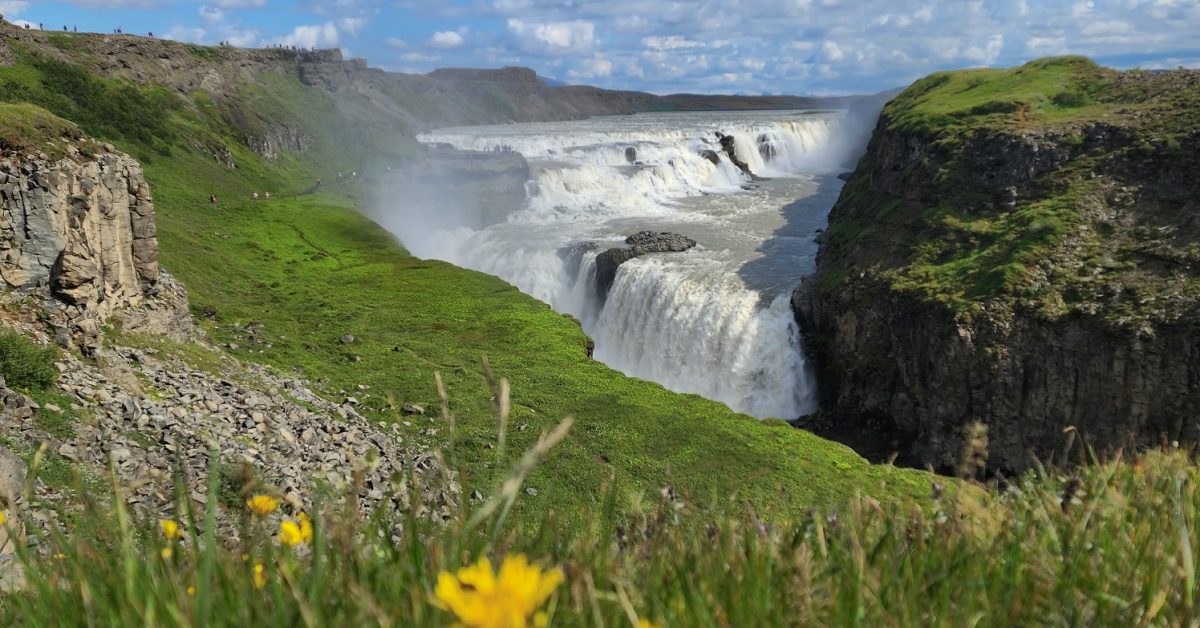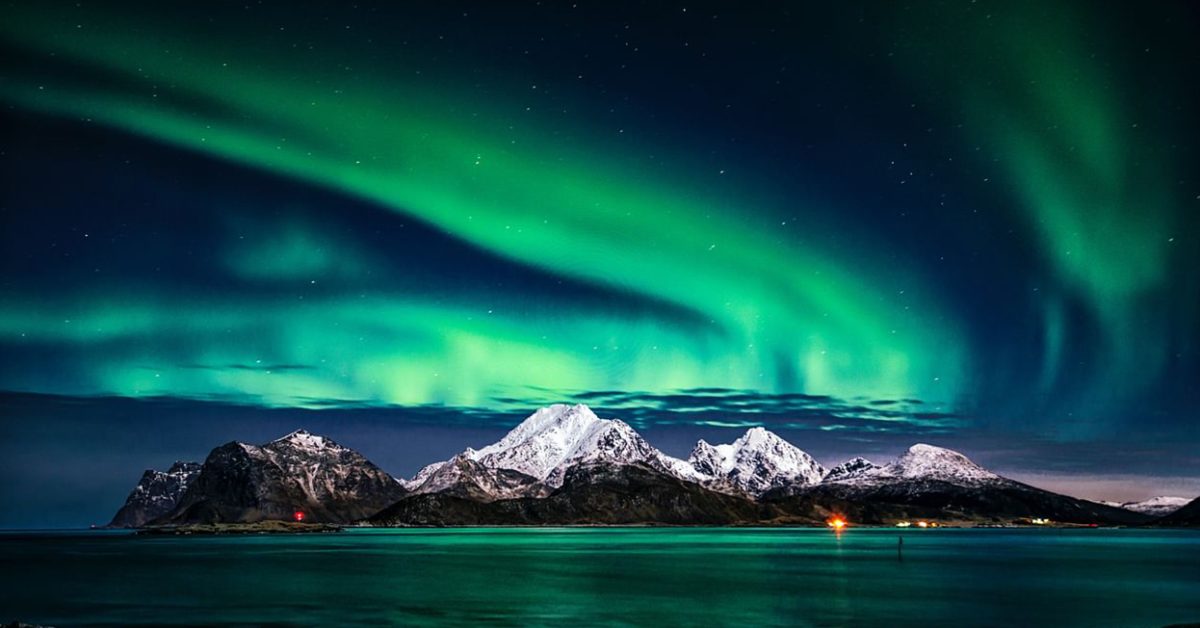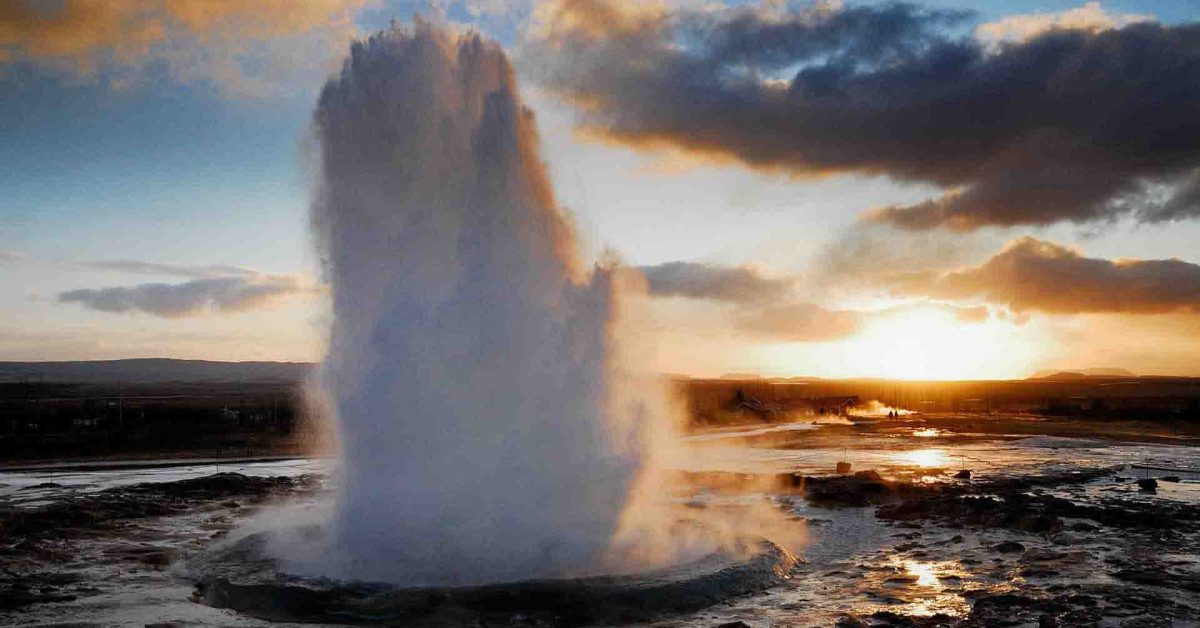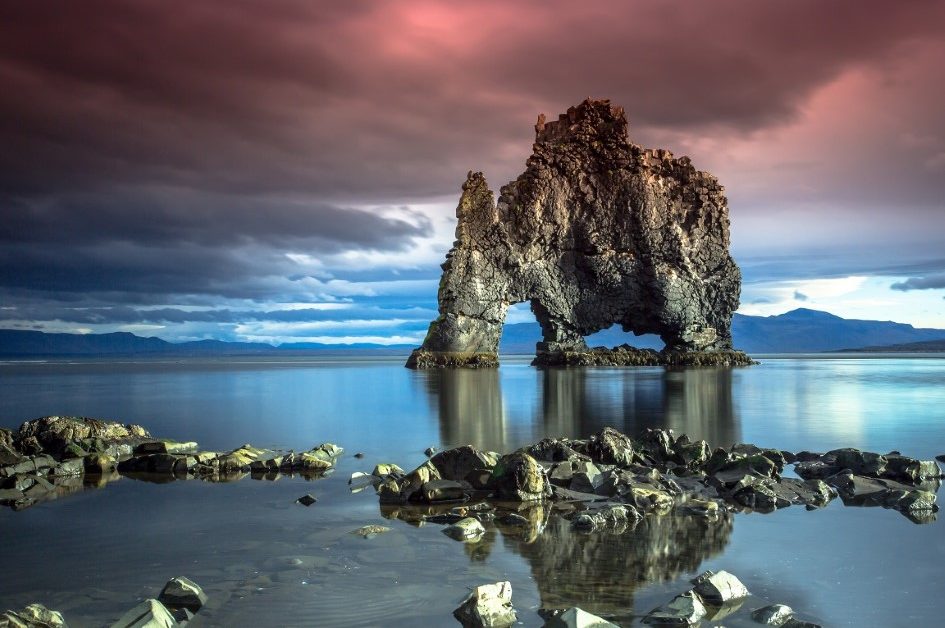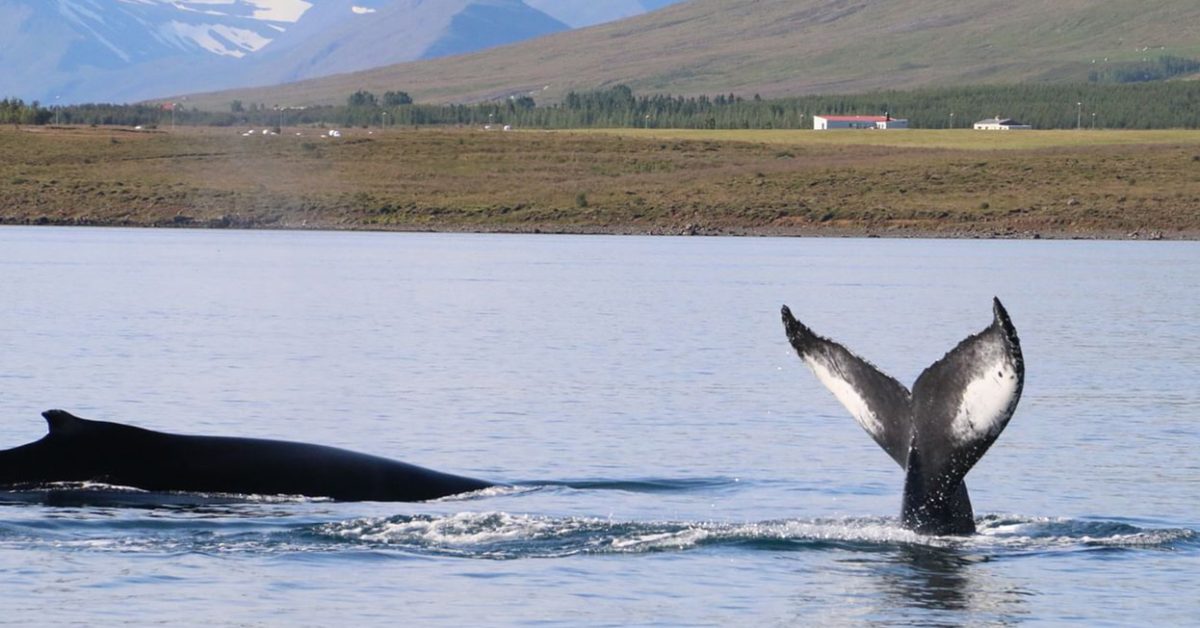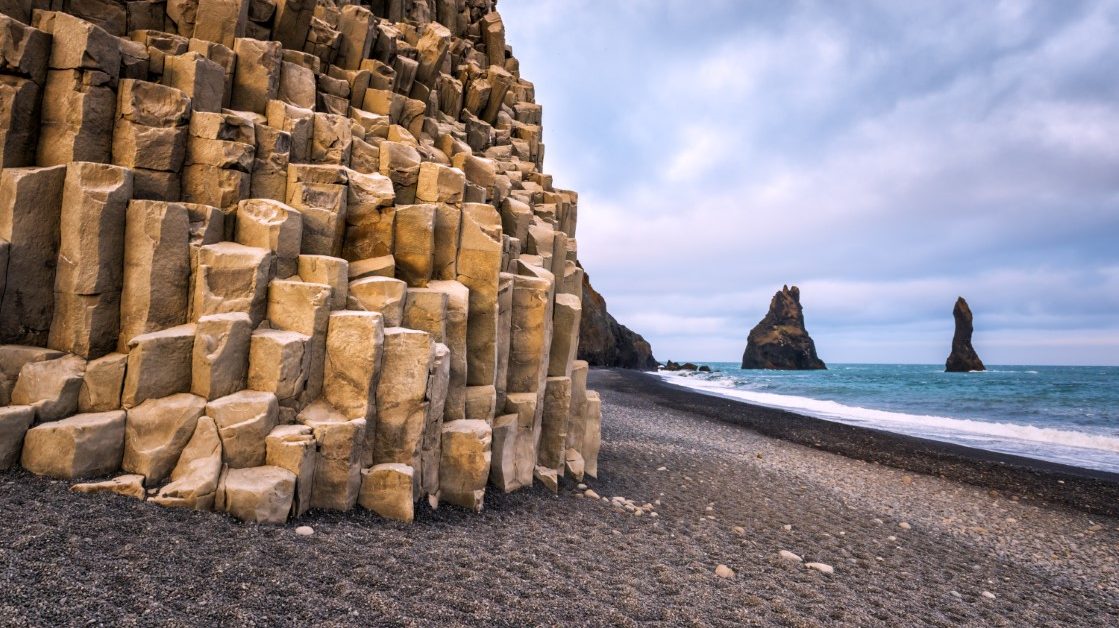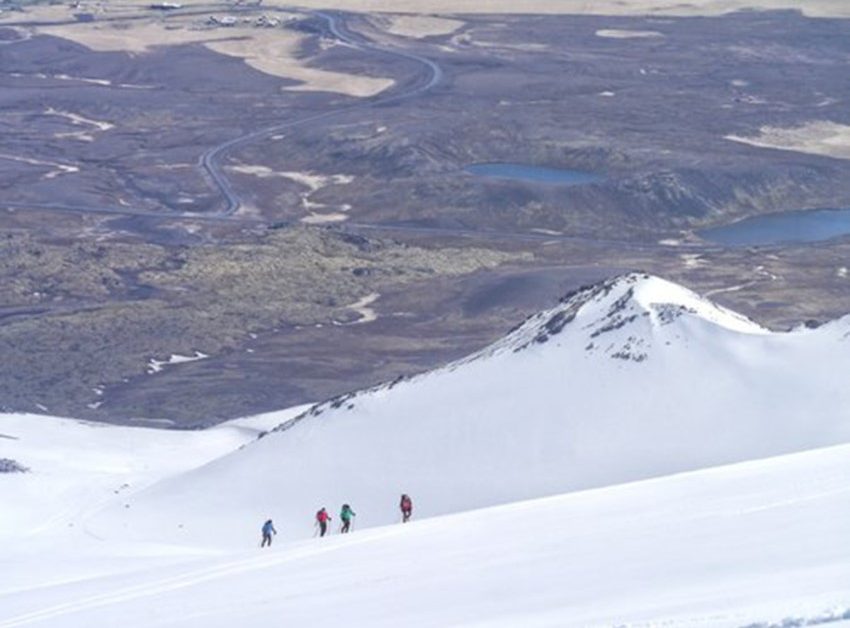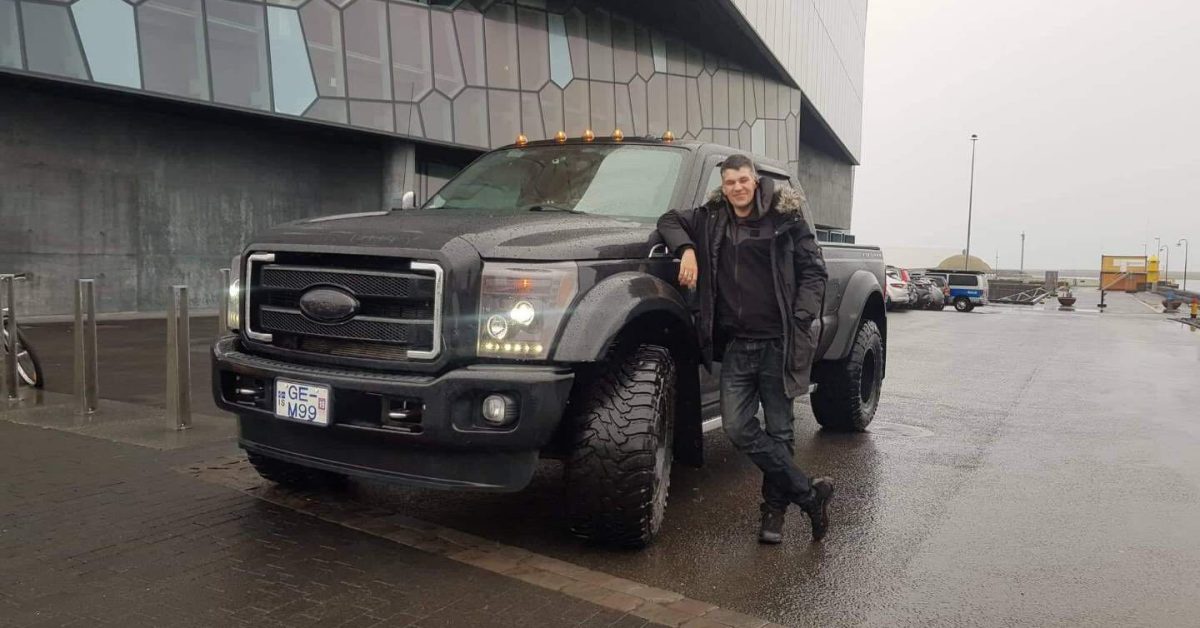40 things that you need to know about driving in Iceland
Driving is one of the best ways to explore Iceland. Being a photographer’s paradise, driving allows you to explore at your own pace, go to the less known/less popular places, explore the not-so-accessible areas, or go where you want to go without having to follow some pre-decided schedule.
This land of ice and fire offers breathtaking scenery at every turn. What you will get to see behind each mountain is way beyond the imagination. I know how frustrating it can be when the tour bus cannot stop for you, but the moment is perfect.
It is not rocket science to drive in Iceland. You need to have a driving license, some understanding of the local road signs, some knowledge of the local road conditions and weather, know where you are going, and you are good to go. Easy, right? Yes and no.
Here are some tips about driving in Iceland and some of my own experiences driving in Iceland during summer, winter, and everything in between.
The entire list
1 – Is it safe to drive in Iceland?
2 – Do I need an international driving license in Iceland?
3 – Drive on the right side
4 – Road signs in Iceland
5 – Speed limits
6 – The Icelandic Weather
7 – Hold the door!
8 – How are the roads in Iceland?
9 – Driving during the winter
10 – Rent from the airport
11 – Car or camper?
12 – Is 4×4 necessary?
13 – Taking the ring road
14 – Driving on F-roads
15 – Driving in the Highlands
16 – River-crossing
17 – Off-road driving?
18 – You cannot camp anywhere you want
19 – The best camping grounds in Iceland
20 – Planning with a flexible plan
21 – Rural road hazards
22 – “I need a picture of this” – don’t kill yourself for it
23 – Is GPS necessary?
24 – How much does diesel/petrol cost?
25 – Mark out your gas stations beforehand
26 – Do I need to pay for parking everywhere I go?
27 – There are not so many public toilets
28 – What is the recommended driving distance each day?
29 – Where to go for not-so-expensive food?
30 – Get a travel credit card
31 – Must I get travel insurance?
32 – What do I do in an emergency?
33 – Must I drive to experience Iceland?
34 – Is there any alternative if I am uncomfortable driving?
35 – When is the best time to visit Iceland?
36 – When is the best time to see Aurora?
37 – Where is the best place to see Aurora?
38 – What do I need to bring on a self-drive in Iceland?
39 – Accommodations in Iceland
40 – Other general information about Iceland
1 – Is it safe to drive in Iceland?
Iceland is one of the safest countries in the world. Crime rates are shockingly low, and hitchhiking is like everyday life. It is safe to drive around, even alone, so long as you know where you are going and what you are doing.
As beautiful as it might be, the weather in Iceland is unpredictable, sometimes even mean. Over the years, there have been many life-threatening incidents when tourists get themselves into dangerous situations simply because they belittle the weather.
The Iceland weather forecast website is the official source for weather warnings. Safe Travel is another website that you should check out for road safety information when driving in Iceland.
A word of advice—heed the warnings. If a road is closed, there is a good reason why. If you are not sure how the conditions are, speak with the locals. They are very friendly and will not hesitate to offer some help.
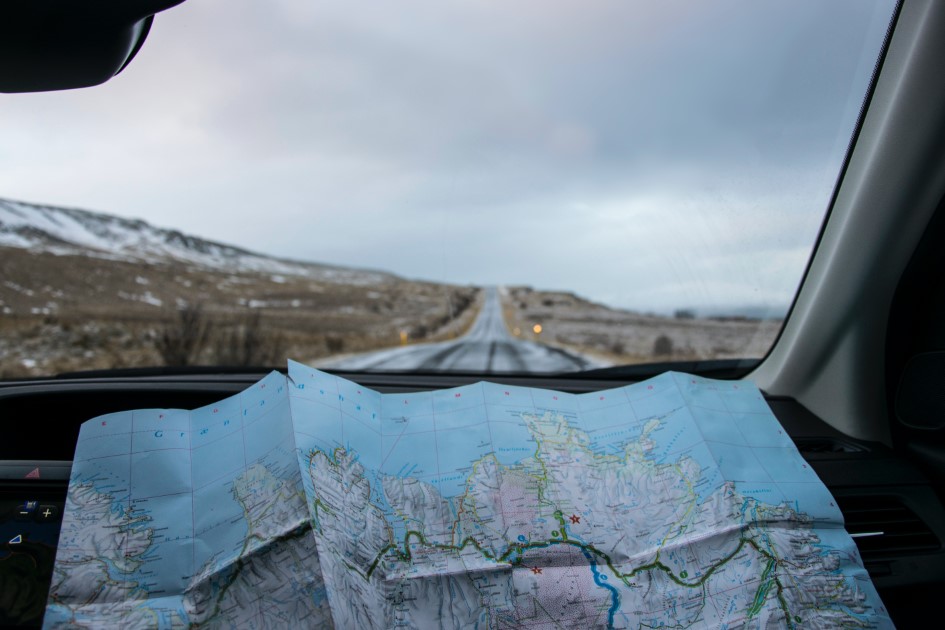
2 – Do I need an international driving license in Iceland?
No, you do not need an international driving license if you have a valid driver’s license with a license number, a photograph, a valid date, and Latin letters. All US, UK, Canada, EU, EEA, Australia, China, and India driving licenses are valid. If you are unsure, check with the car rental company, and they can advise you.
Another thing that you might like to note is that you need to have a driver’s license for at least one year to drive on Iceland’s roads. Also, to rent a car, you need to be at least 20 years of age for a passenger vehicle or 23 years of age to rent a 4WD or all-wheel-drive vehicle.
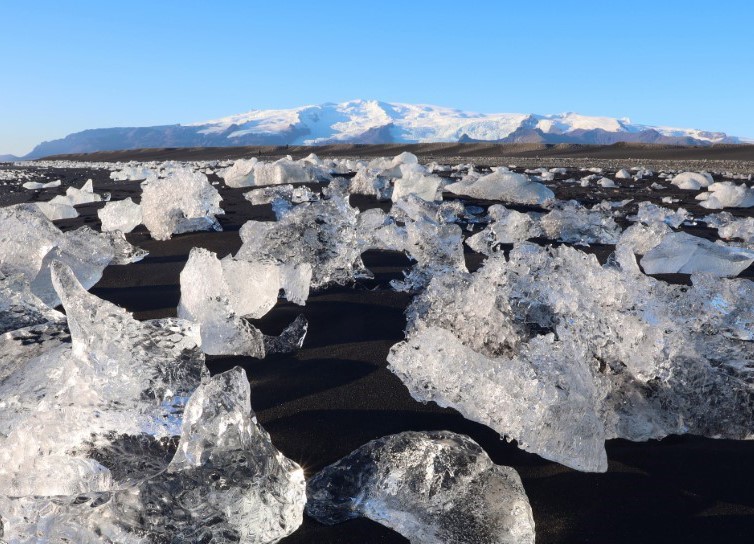
3 – Drive on the right side
Cars drive on the right side of the road, meaning that the steering wheel is on the left side of the vehicle. So, if you do not have it the same way in your country, then you have to get used to doing it because everything will be on the opposite side.
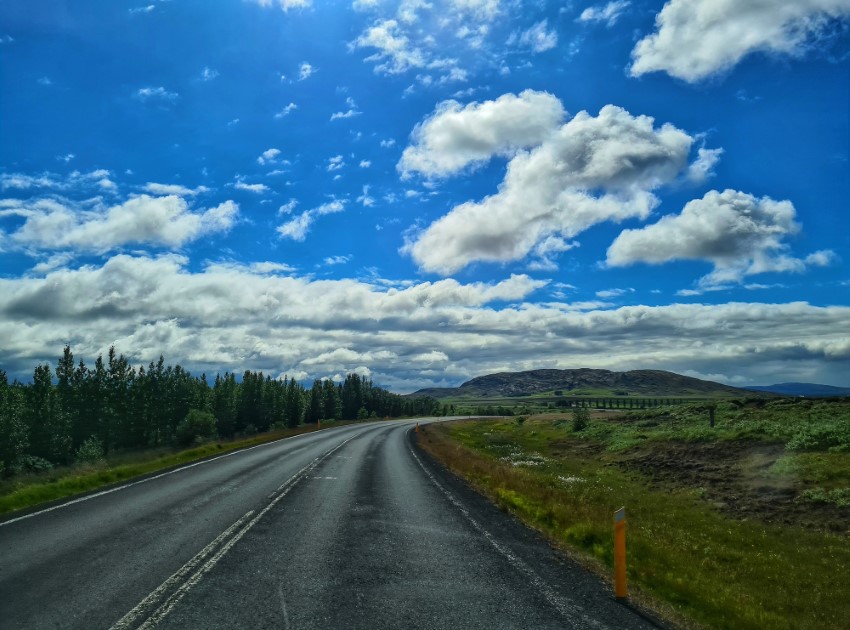
4 – Road signs in Iceland
Most road signs are very similar to those everywhere, with a few unique ones. You can find a list here. Be sure to study them before hitting the road just to be sure that you know what to do or prepare for when you see them.
5 – Speed limits
50 km/h in towns, 80km/h on gravel country roads, 90km/h on hard surface roads, and any other speed limits according to the road signs. Most of the roads outside of Reykjavik are single lanes so following the speed limits is ideal and necessary.
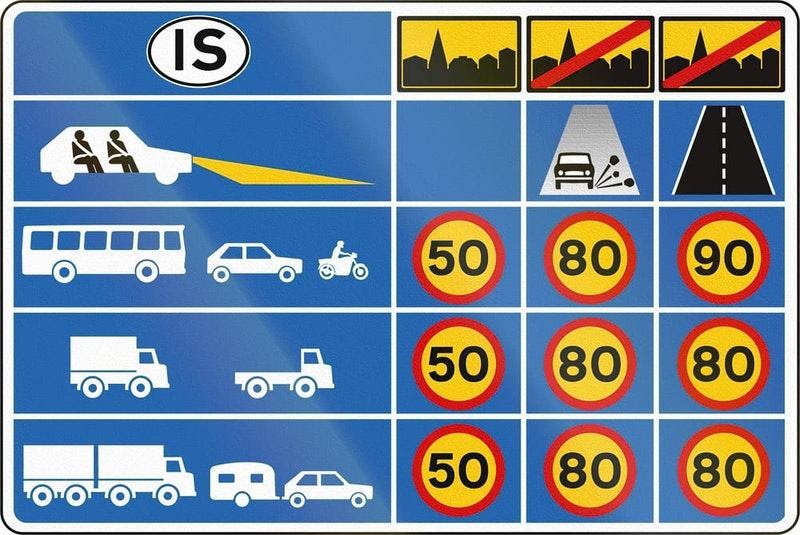
6 – The Icelandic Weather
The weather in Iceland is incredible, sometimes, but not all the time. Without air pollution, the sunrises and sunsets in Iceland are amazing. The clouds and landscapes are perfect for all kinds of landscape photography. But they are not so calm and peaceful all the time.
Iceland is known for its unpredictable and extreme weather. There is a saying among the locals: “If you do not like the weather, just wait 5 minutes”.
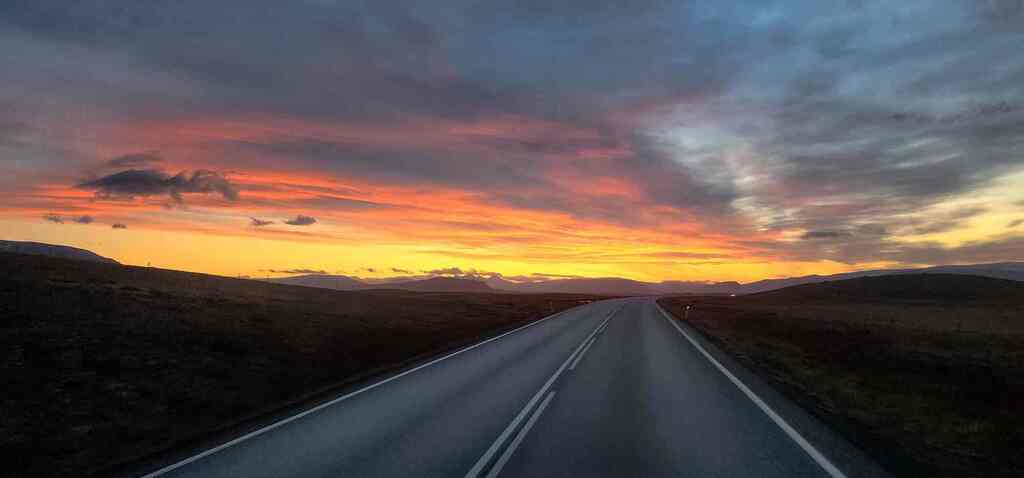
The weather can change so quickly that if you are not prepared for it, you might be in a life-threatening situation you do not want to be in.
Being prepared is the key. Always have a jacket with you, even during the summer. Check the weather forecast before heading out.
If you are unsure what to expect, check with the locals. They are very friendly and will offer help when needed.
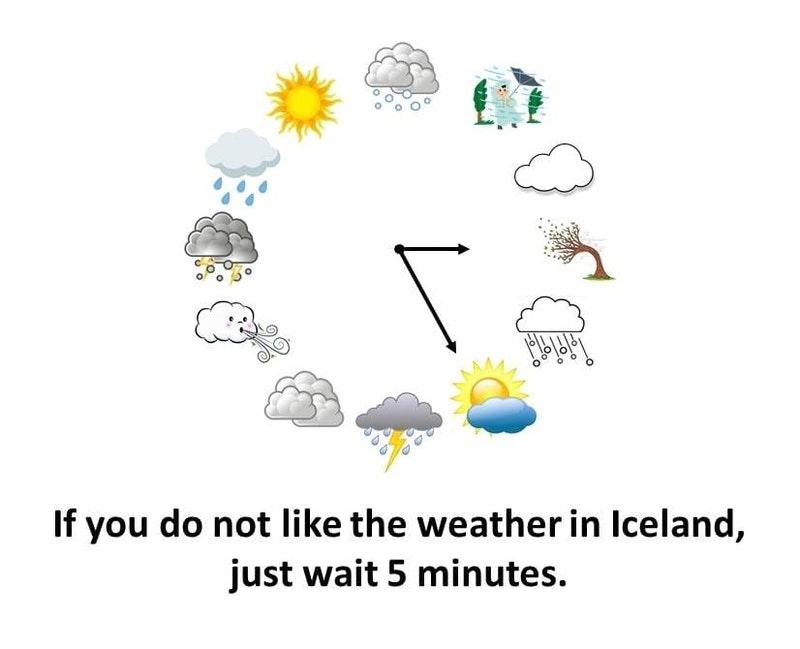
You can read more about the weather in Iceland.

7 – Hold the door!
Iceland has some powerful winds. It is number 3 in the world, following closely behind the North Pole and Antarctica.
Hold on to your door when boarding or alighting from the car. If the door gets blown off by the wind, you are on your own. It is not covered by insurance. And I am not joking.
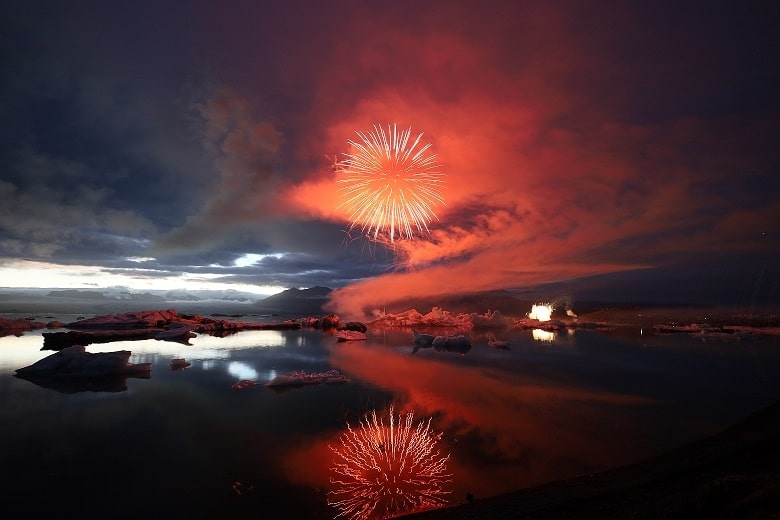
8 – How are the roads in Iceland?
The roads in Reykjavik are just the same as all other city roads. Even in winter, they are salted and cleared often enough, so driving will not be a problem. But the streets outside of Reykjavik are another story. The roads are stilted. This reduces the cumulation of water during winter, which causes icing problems (slippery roads). So, hands-free driving is not recommended.
Sometimes, the roads can be “holey.” Literally, they are filled with holes, many holes. This problem is more significant during peak tourism periods when many cars are on the roads. Since many of the roads are single lanes, avoiding the holes might not be an option. The best way is to slow down and drive over the holes gently. You can read more about moving on F-roads in the later section.
Road number one is the main road. The roads are numbered according to their usage. Most roads are paved and can be driven by all vehicles. The mountain roads are gravel and can only be driven by 4×4 vehicles. You can check live road conditions on a map here. You can also find more information at www.road.is.

9 – Driving during the winter
This is when you get the best and the worst. Driving in winter is fantastic, literally and figuratively. You get a different scenery and much more beauty as tourism is low and many parts of the country are still accessible during the coldest months.
The downside is that you get icy roads (that are slippery), snow, and snowstorms (which can mean a complete white-out and you cannot even see what is right in front of you), and crazy winds (mid-December to mid-January is usually when the craziest winds are).
Always check the weather forecast and the road conditions before heading out. You can always ask a local for tips or advice on your trip.
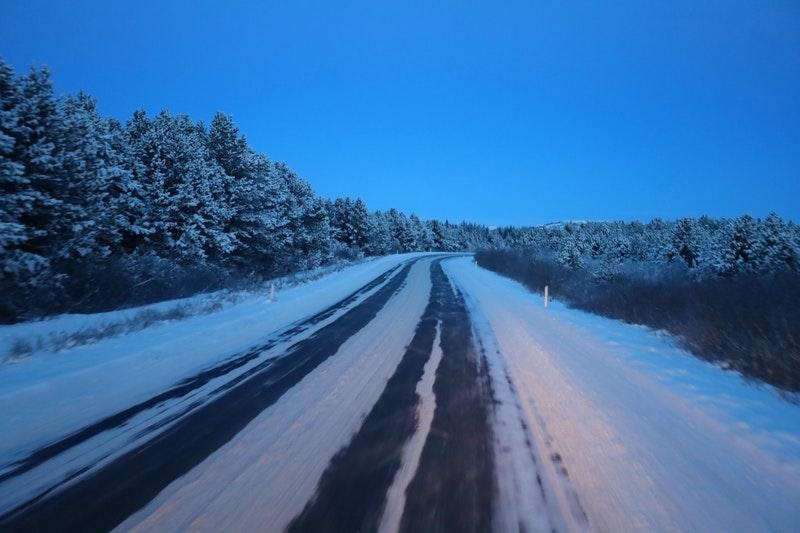
10 – Rent from the airport
What is the difference between renting from the airport and renting from Reykjavik? All airport rentals include an airport surcharge of about EUR30* per rental.
Okay, so getting the rental car from Reykjavik should be cheaper, right? Not really. There is no public transport from the airport to Reykjavik.
You can take the airport transfers (EUR25 per person) or a taxi (EUR100 per way). Of course, you can try your luck at hitchhiking (free), but there is no guarantee that you can get a ride within 24 hours. So, the conclusion is that renting directly from the airport is still cheaper.
*All prices were correct when writing; please check our website or contact us for actual prices.
11 – Car or camper?
There are a few factors that need to be considered here.
1) Budget
A camper will be cheaper than a car, plus accommodation, as the accommodations in Iceland are expensive.
2) Season
A camper might not be doable during the winter as most of the camping grounds are closed, so you will have no place to camp. Furthermore, it is cold during the winter. To burn so much fuel to keep warm, getting a bed in a hostel might be cheaper. So, renting a car during the winter will be more practical.
3) Route
Most campers are not allowed on the highlands and the F-roads. So, depending on where you plan to go and what you plan to see, a camper might or might not be feasible.

12 – Is 4×4 necessary?
It depends on where you want to go and what you want to see. A 4×4 is a must if you are going into the highlands or if you are going onto any F-roads. But, if you only plan to stick to road one or do the ring road, then a 4×4 is unnecessary.
On a side note, a 4×4 will give you much better handling and control on slippery roads if you are driving during the winter.
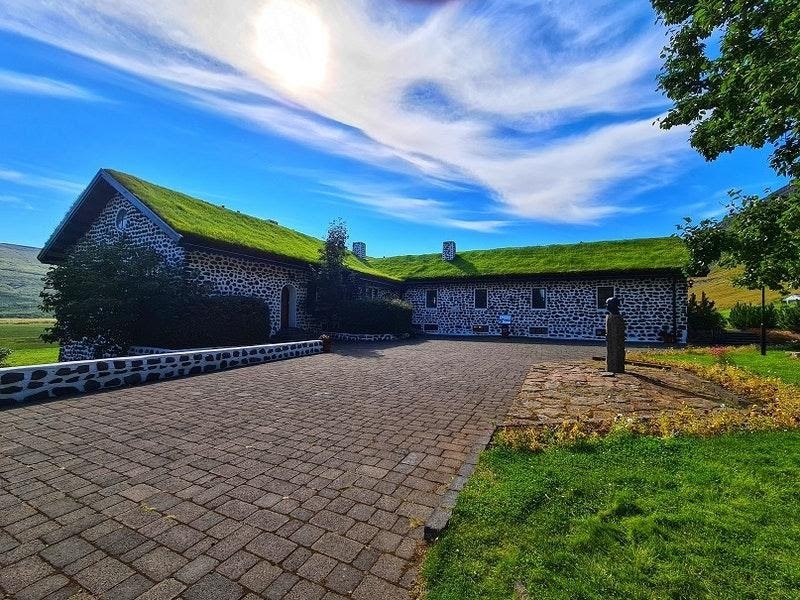
13 – Taking the ring road
The ring road goes around Iceland, also called road number one. It brings you to the major towns in Iceland. It is 1332km and takes you at least 16 hours to go around with non-stop driving, but what is the point, right?
Ideally, stopping at the major attractions takes about 8-10 days to go around. I have gone around several times, stopping at various places and sometimes going off-road to check out some remote locations, and you will need to allocate extra time for this.
Facilities and amenities are scarce along this ring road. You will see that the further away from the capital, the fewer buildings you will see. Be sure to mark out where the toilets, gas stations, and café/restaurant are. It is expected to find nothing for 2-3 hours of driving.
Although the ring road does take you to most of the main attractions, many of the best sites are not on it. You might like to do some research beforehand and save their locations on an offline map, as internet service can get sketchy in remote areas.

14 – Driving on F-roads
F-roads are gravel roads, mostly in mountainous regions, and are only accessible by 4×4 vehicles. Be sure to check with the car rental company which vehicle types are allowed on F-roads and the insurance required, as damages to tyres, paint, etc., are common on F-roads.
If possible, get full coverage or zero excess insurance. Several rental companies in Iceland provide zero excess insurance; be sure to check for that before deciding.

15 – Driving in the Highlands
The highland roads are only open during the summer. You can find the list of roads and opening period here. The actual opening of the roads may vary from year to year, depending on weather, how fast the snow is melting, etc. Always check road conditions and weather forecasts before heading out.
Safe Travel offers a service where you can leave your travel plan with them just so that someone can check in on you, or in the event of an emergency, the search and rescue will be able to locate you quickly.
This service is beneficial, especially if you are travelling alone or planning to stay in the highlands for an extended period where communication is minimal or non-existent.
Another factor you will need to consider is crossing any river along your route. Read more in the next section on river crossing.

16 – River-crossing
First and foremost, not all 4×4 can cross every river. This is a common misconception that has caused many problems (and much money) to tourists who attempt to cross whatever river just because they are in a 4×4.
It is essential to understand the kind of vehicle required to cross different rivers and in various conditions. The following sign can be found on almost all river crossing points.
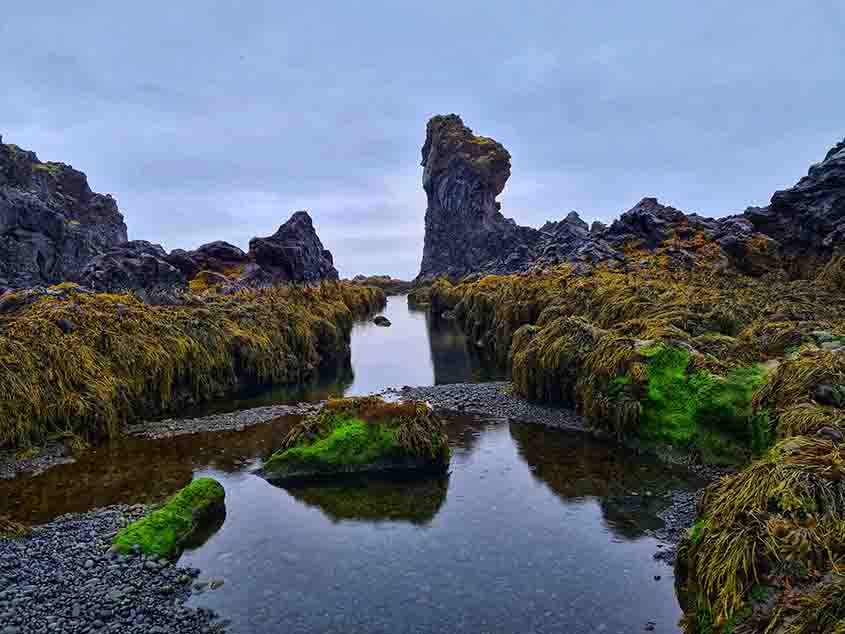
The river crossing is always at your own risk. No insurance will cover any damage caused by crossing the river (damages can cost thousands of euros/dollars). If you are unsure of crossing the river then don’t do it, just turn around.
The last thing you need is to drown your car in the middle of the river, putting your life (and your passengers) in danger, putting an end to your supposed to be a fantastic holiday, and putting a gigantic hole in your pocket paying for the damages that could be avoided.
You can find more information about river-crossing on Safe Travel.
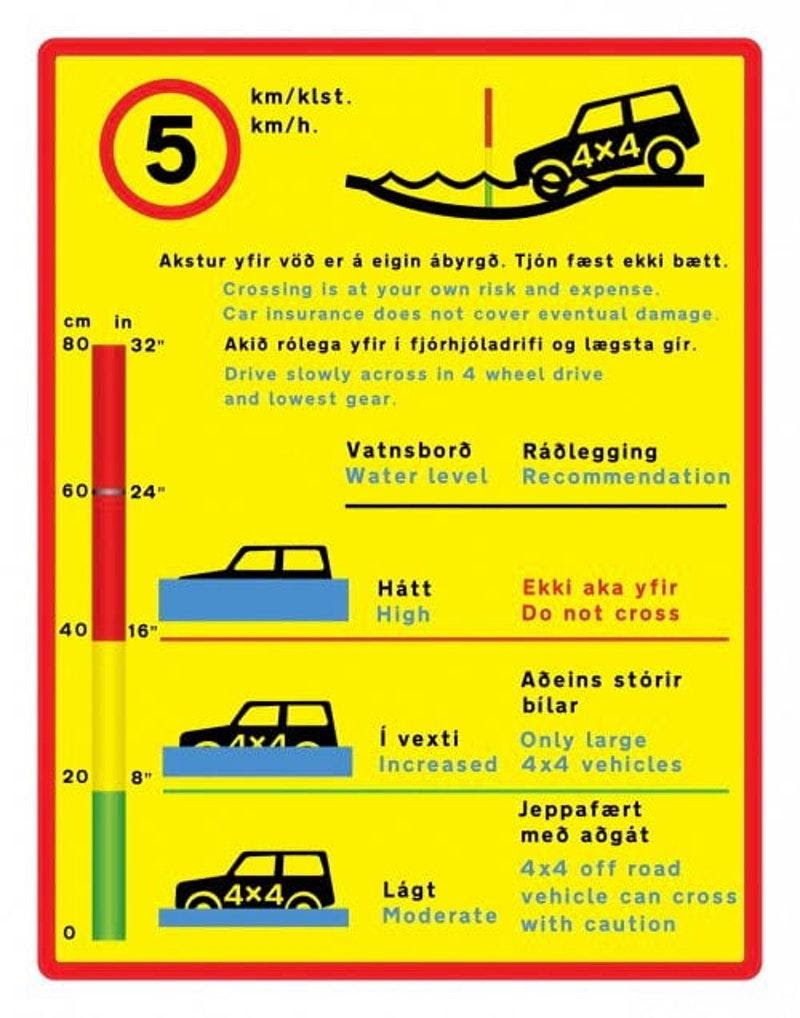
17 – Off-road driving?
It is forbidden to drive off-road in Iceland. You are not allowed. I cannot emphasize enough. Fines are heavy. Icelanders love their nature (and you should, too) and cannot tolerate anyone damaging it.
So please do not drive off-road; let’s help keep the untouched nature as it is.
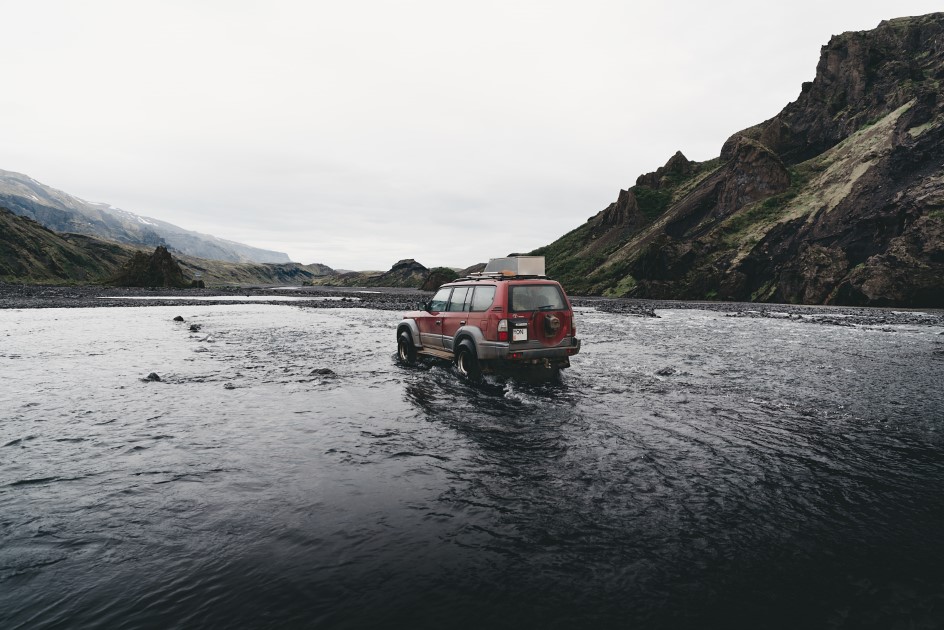
18 – You cannot camp anywhere you want
I know it is perfect to camp beside the waterfall or unique landscape and fill your Instagram with killer pictures of your camping experience. But you cannot camp just anywhere you like. It is a law that you can only camp at designated campsites unless you have permission (from the landowner or authority) to camp elsewhere that is not a campsite. Many attractions have signs explicitly saying “No camping” or “No overnight parking”.
So where should you go camping? There is a campsite in almost every town in Iceland (two or more in bigger cities). The campsites charge ISK 1000 – 2000* per person, an electricity fee if your camper needs power, and a shower fee if you need to use the shower.
Some campsites charge per tent. Most campsites provide facilities like toilets and communal areas. The smaller campsites might not have a shower and WIFI. The larger campsites have more facilities like BBQ pits and a kitchen.
If you travel during the winter, you should research beforehand as many campsites are closed during the winter (October – May). A couple of campsites allow camping for free during winter but without facilities. It might not be ideal at the end of the day. You can find more information on where you can camp here.
You can read more about Camping in Iceland.
*All prices were correct at writing time.
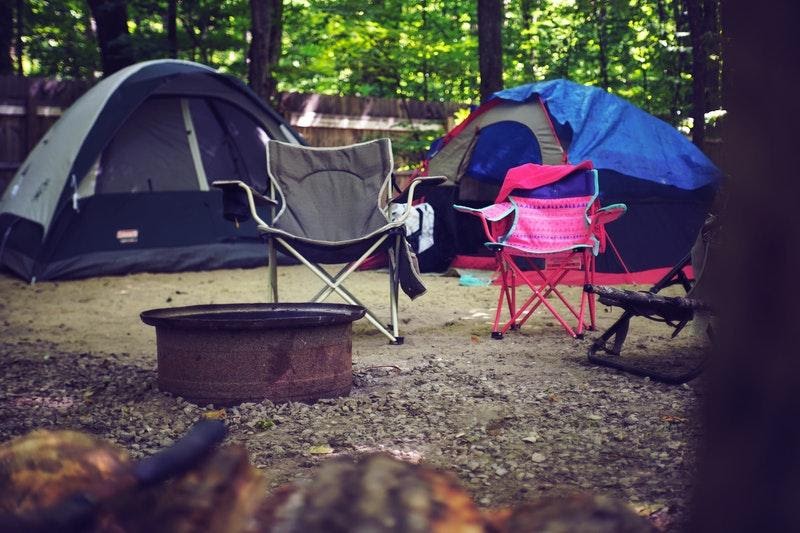
19 – The best camping grounds in Iceland
Having camped in almost every campsite in Iceland, I have personal preferences for the best campsites.
Atlavik (on the outskirts of Hallormsstaður Forest, East Iceland) is one of my favourite campsites. Its location is spectacular—by Lake Lagarfljót. It is a huge campsite with plenty of toilets, dishwashing areas, and shared BBQ pits. The only downside of this campsite is the lack of a shower.
Hofsós (North Iceland) is a small campsite with its back to the mountain range and its front to the ocean. It cannot get any better than this. It has toilets, a shower, a dishwashing area, and WIFI. It is also one of the cheapest campsites. There is a huge children’s playground around the corner, and the public swimming pool is two streets away.
Akranes Campsite (West Iceland) is one of the campsites with the best facilities. It has a washing machine, dryer, kettle, microwave, outdoor cooking space, many toilets, showers (with unlimited hot showers included in the price), and WIFI. The only downside is that it can get pretty windy here, as it is by the waterfront with not many trees around.
Hvolsvöllur Campsite (South Iceland) is a comfortable and convenient campsite. It is spacious beside the ring road and has the necessary facilities like showers, toilets, a kitchen, and a washing machine. It is also very covered—not so windy. N1 gas station and Kronan supermarket are very nearby. The downside is that this campsite can get very crowded during the peak season, as the locals love to camp here, too.
Of course, these are based on information and experiences up to summer 2020. Since then, there might have been new facilities and updates on some campsites. This information will be updated after summer 2021.
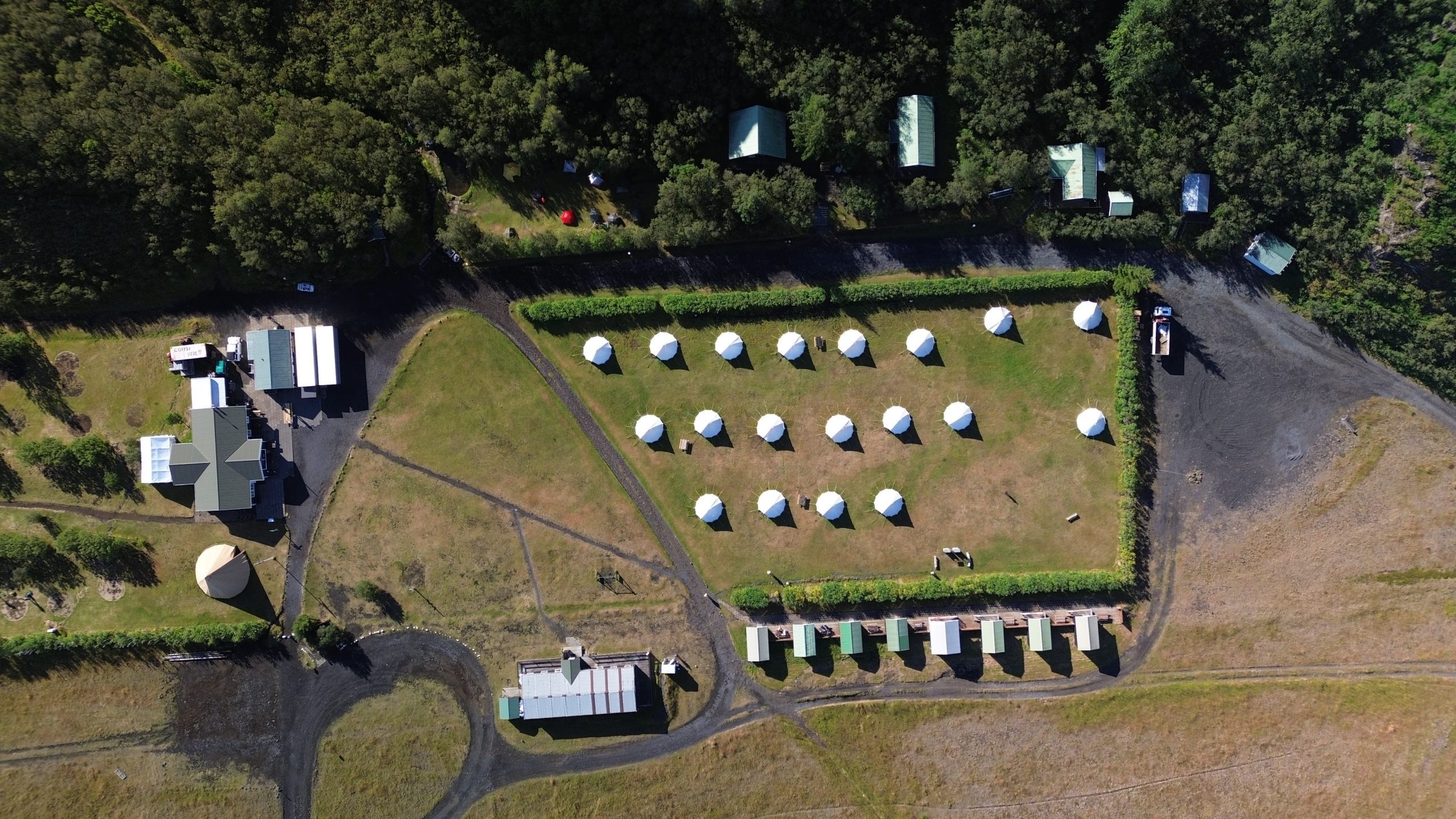
20 – Planning with a flexible plan
I know many people who love to travel on the go, deciding where to go and what to do only on the day or when they are at the location, depending on the weather, etc. I can be like this sometimes as well, but Iceland can be a bit tricky regarding on-the-go trips.
The reason is that the distance between attractions and facilities can be significant. Many factors (like weather, closed roads, etc.) can prevent you from reaching the desired destination for the night if you do not plan.
Also, many factors (unexpected storms, road works, etc) may cause you to change your plan at the last minute. In a way, it is travelling on the go but with much research done beforehand. You will need this information to make an informed decision and know how to change your plan.
Also, having a good understanding of the Icelandic weather, daylight hours, etc, can be very helpful when planning your trip. Alternatively, you can always get an itinerary planning service where a local travel professional will help you with your planning and help you make any changes (even last minute), if necessary.
21 – Rural road hazards
By rural, I mean any road outside of towns or cities. This is when most of the road signs come into play. Whether sheep (or other animals) are on the road, a gravel road, blind cries, or a single-lane bridge, they all require you to slow down and give way.
The trickiest ones, I would say, are the single-lane tunnels (mostly in north Iceland). Pulling into the turnouts (or ‘passing places’) at specific intervals would be best to allow oncoming traffic to pass.
So, who has the right of way? If the turnout is on your side, you must give way. If you are further away from the bridge, you should give way to the vehicle approaching first. If you are with a smaller car, you should give way to a larger vehicle as they take much longer to stop.
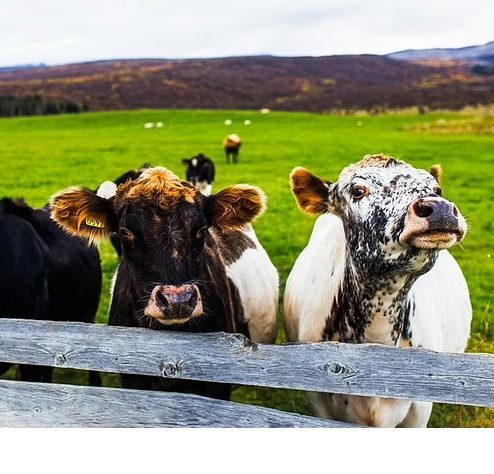
22 – “I need a picture of this” – don’t kill yourself for it
The landscape along the road in Iceland is to die for, but I do not mean you should die for it. If you need to stop for pictures, do so safely. There have been too many unnecessary accidents involving tourists stopping in the middle of the road to take photos or trying to dig for their cameras while driving.
Iceland is a photographer’s heaven. I have been taking many pictures on the road, so please do so safely. Pull over in a safe spot or find one of the ten thousand parking spots along Road One and hike back a little for your picture.

23 – Is GPS necessary?
Yes. Get an offline one if possible (especially if you plan to enter the highlands). All the road signs are in Icelandic, so you probably won’t know where you are going unless you can read Icelandic.
Furthermore, not all the signs to attractions are on the main road. You probably won’t know where to turn to get to the attraction without a GPS.
Car rental companies rent out GPS systems for about EUR8* daily; you can also use data on your phone for Google Maps. Mark out essential locations and make them visible offline, as cellular services can be sketchy in rural/mountainous areas.
*Prices were correct at the moment of writing.
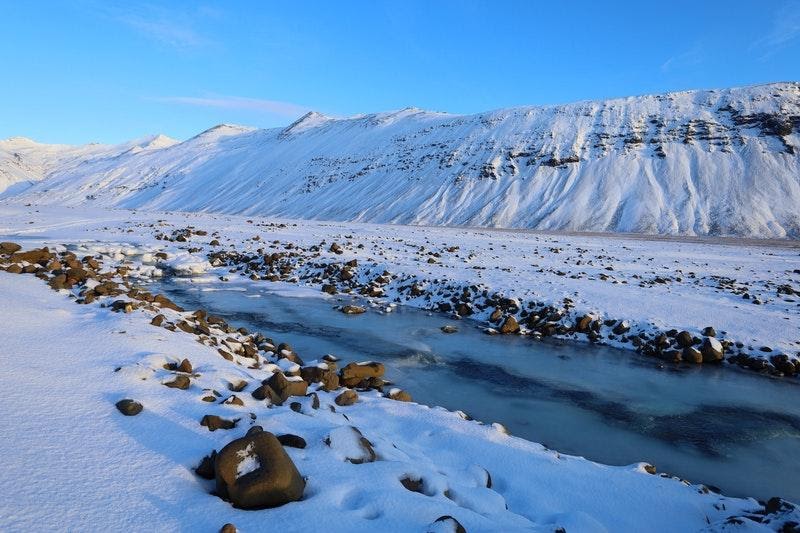
24 – How much does diesel/petrol cost?
Gasoline is EUR1.36 – EUR1.59 per litre (at the time of writing), which works out to EUR5 – EUR6 per gallon. One year ago, the average gasoline price was EUR1.70 per litre (EUR6.50 per gallon).
It is pretty expensive compared to everywhere else on earth. Be prepared to spend a lot on gas. (Prices can change over time, so make sure you check for updates.)
One way to save a little on gas is to use an electric radiator in the camper instead of burning gas overnight. Another way is to choose a diesel vehicle over a petrol vehicle. From experience, diesel vehicles do save us quite an amount over time.
Check with the car rental company if they provide a fuel card. Many have a contract with a fuel company, and you get a small discount when using a fuel card. It will add up to a significant amount if you are going to be driving a bit.

25 – Mark out your gas stations beforehand
Gas stations are scattered around Iceland. Depending on which brand you choose, there might not be one in every town. There might also be a gas station in the middle of nowhere, or the next gas station might be 300km away from the one you passed, and you are down to the last bar.
All of Iceland’s gas stations are self-service, and many are unmanned. American Express and some American credit cards do not work at the pump. You must ask the attendant to unlock the pump and pay inside or get a travel credit card.

26 – Do I need to pay for parking everywhere I go?
No, outside of Reykjavik, most of the parking is free with the exception of certain attractions like Seljalandsfoss, Thingvellir National Park, and Kerid volcano crater, just to name a few. Otherwise, parking at grocery stores, restaurants, and hotels is all free.
Of course, parking is not free at the airport, but most tourists won’t need to pay for it since they are simply picking up and dropping off their vehicles.

27 – There are not so many public toilets
Public toilets are a rarity in rural areas, especially in areas away from popular attractions and in the highlands.
Do your business before leaving for the day, and use whichever gas station and restaurant you want. Otherwise, you must do it the “natural” way (please clean up after yourself).
Or, if your situation is urgent and you cannot wait any longer, knock on the door of any farmhouse or residential building along the road. The locals usually don’t mind borrowing their bathroom during such emergencies.
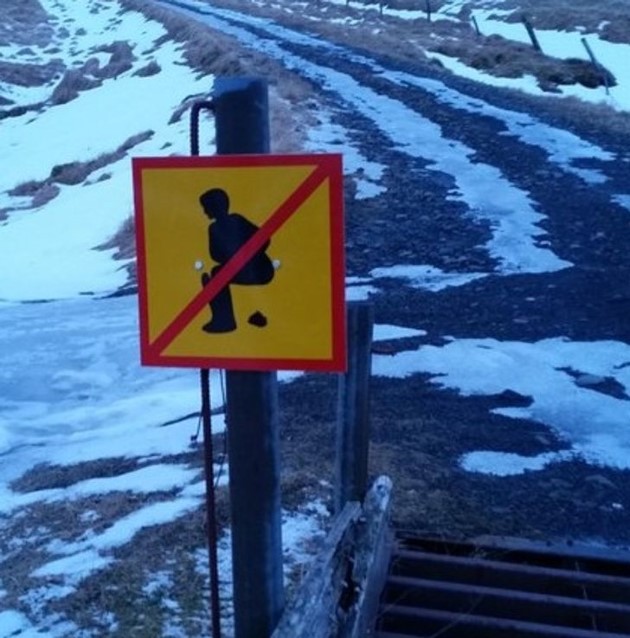
28 – What is the recommended driving distance each day?
I typically travel 100 – 300km a day if I do not stop at every parking spot. But this depends on what you want to see, do, and experience.
I once was at the Vatnajokull National Park for three days as there were so many beautiful places to photograph. If you end up in Landmannalaugar or Þórsmörk, you might do a lot more hiking than driving.
Each location is easily a 3-4 day trip. More importantly, it is what your plan is. It is not advisable to plan a day of extensive driving as it will significantly reduce the flexibility of your plan, and if bad weather comes up, you will be very stuck.
You can always get an itinerary planning service where a local travel professional will help you with your planning and advise you on what is doable and what is not.

29 – Where to go for not-so-expensive food?
Food in Iceland is expensive. An average meal in a restaurant costs EUR40, and fast food costs EUR12. If you can cook, it will definitely save you a lot of money. Bonus (a grocery store with a pink pig as the logo) has the cheapest food items. Netto and Kronan are a little more expensive in general. Grocery stores outside of major towns have limited food options.
Most grocery stores sell marinated meat that you can put straight onto the grill or into the oven. One packet of marinated pork ribs, which can feed 2-3 people, costs about EUR16-20, just for example. There is also marinated beef, chicken, and lamb. It is definitely much cheaper than eating similar items at the restaurant. The only downside is that you will have to do the cooking on your own.
If you cannot cook or have no access to cooking facilities, most gas stations sell box wraps and sandwiches that cost about EUR4 and make decent meals. The Icelandic meat soup, which you can find almost everywhere, is quite filling and makes a meal on its own. Bonus sells this soup inbox that you can heat in a microwave or a pot of hot water.
Gas stations like N1 and Olis offer considerably less expensive meals than restaurants. N1 sells hot meals like grilled chicken and burgers, and Olis sells sandwiches similar to Subway.

30 – Get a travel credit card
Iceland is a credit card nation. I have been in Iceland for several years, and other than specific flea markets and small second-hand stores, I have been using credit cards everywhere, including toilets (yes, you need to pay for toilets at some attractions).
Get a credit card that gives you good rewards, miles, and points, and there is your next flight to your next destination. American Express and certain credit cards from the US are not as widely accepted in Iceland as VISA and Mastercard.
On a side note, you can get a small discount if you pay cash at certain guesthouses, farm stays, and cottages. The owner said that they would have to pay a certain percentage to the credit card company anyway, so they did not mind passing on that benefit to the guests. Ask the owner; you might save yourself some money.
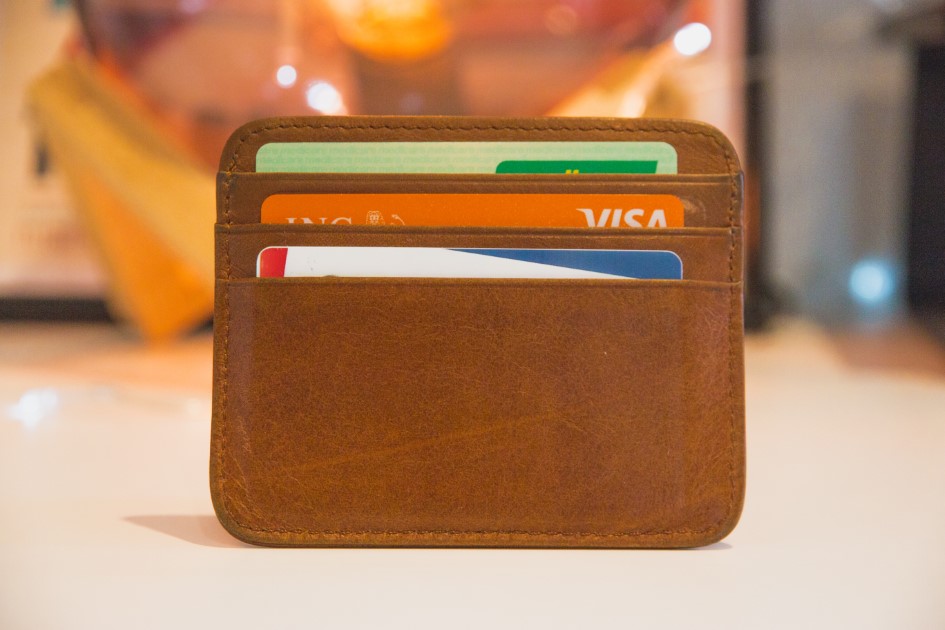
31 – Must I get travel insurance or car insurance
Most people think they don’t need one until they need one, but they don’t have one. Having been travelling plenty, travel insurance is not a good thing; it is a must-have, as is the flight ticket. Good travel insurance covers more than just medical and evacuation. It takes care of missed flights, trip cancellations, damaged luggage, and more.
On top of travel insurance, the other insurance that you will need to think about is car insurance. Most car rental companies in Iceland cover for CDW (collision damage waiver), which is the most essential coverage but based on personal experience and having spoken with many tourists who got into trouble with car rentals, insurance coverage was the main issue.
CDW covers damage caused by collision, and it always comes with excess (EUR1200 – EUR2500). This is the part that most people are not happy about, especially if you do not strictly cause the accident. If the car rental company offers coverage with zero excess, take it. It will save you a lot of unnecessary headaches, high blood pressure, and whatever.
SADW (Sand & Ash Damage Waiver): This coverage is usually sold as an add-on. It covers for damages caused by sand & ash storms.
This sounded unnecessary to me at first, but wait till you drive past some “sandur,” and the wind starts blowing at your car. The next thing you know, some paint has come off the vehicle, and you will need to pay for it. It is like sending your car for sand-blasting, not by your choice. This SADW always comes with excess, so if there is a zero-excess option, take it.
GP (Gravel Protection), this will be necessary if you are planning to drive on the F-roads and in the highlands. GP covers broken windows and lights caused by gravel/stones, which is standard on the F-roads and highlands.
It does not just cover damages that the driver directly causes. It also covers damages caused by someone driving past you and some rock flying towards your car and smashing the window or light.
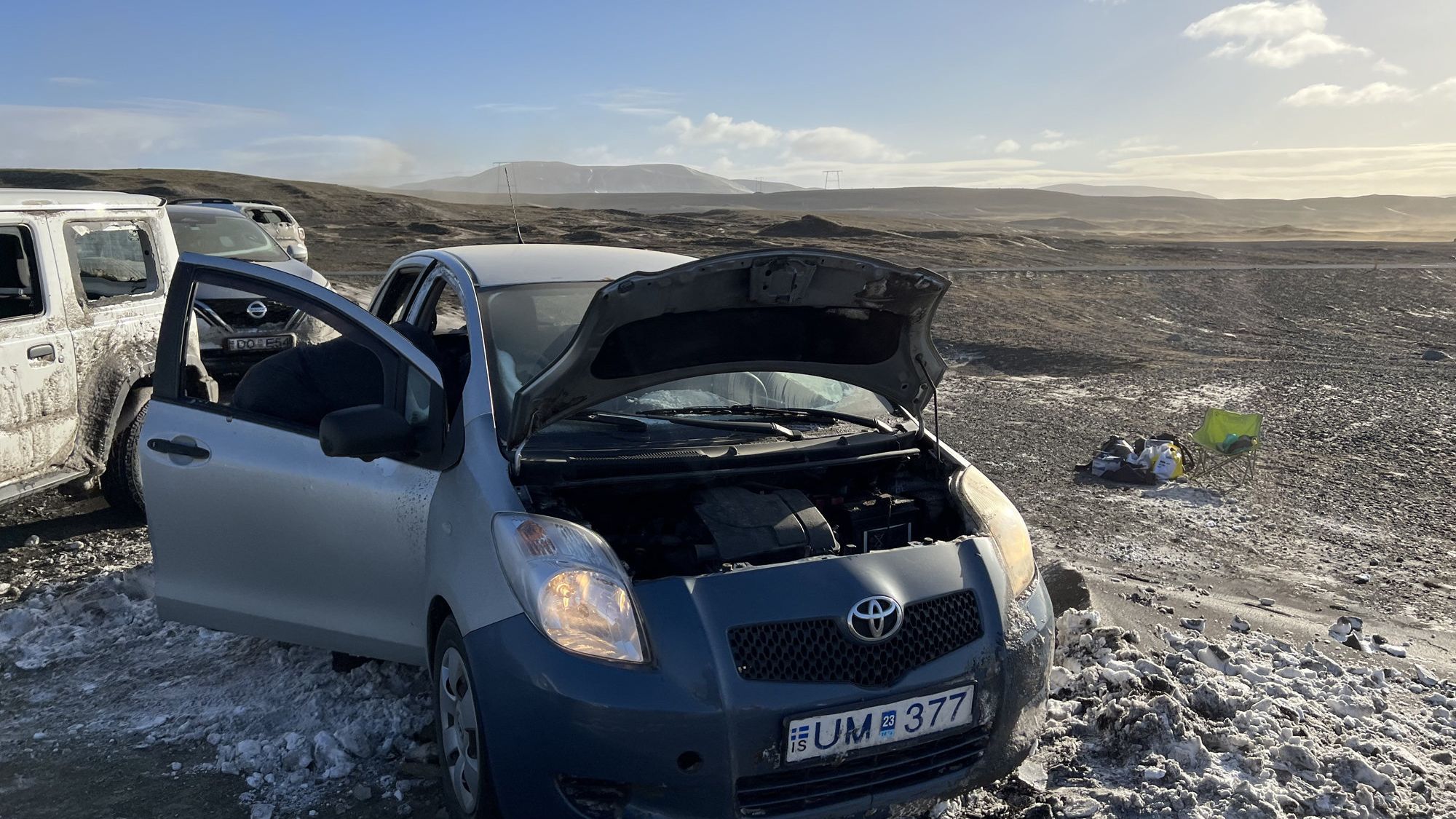
32 – What do I do in an emergency?
The emergency number in Iceland is 112.
This is the number to call, but hopefully, you will never need to. Safe Travel issues warnings and alerts, and you should check regularly for road conditions.
Most importantly, stay calm. Do not panic or do something that might make the situation worse. Icelanders are super lovely and helpful people. If any passerby sees you in trouble, they will stop to help. We have helped a couple of cars out of the snow ourselves so call 112, stay warm and safe, help is on the way.
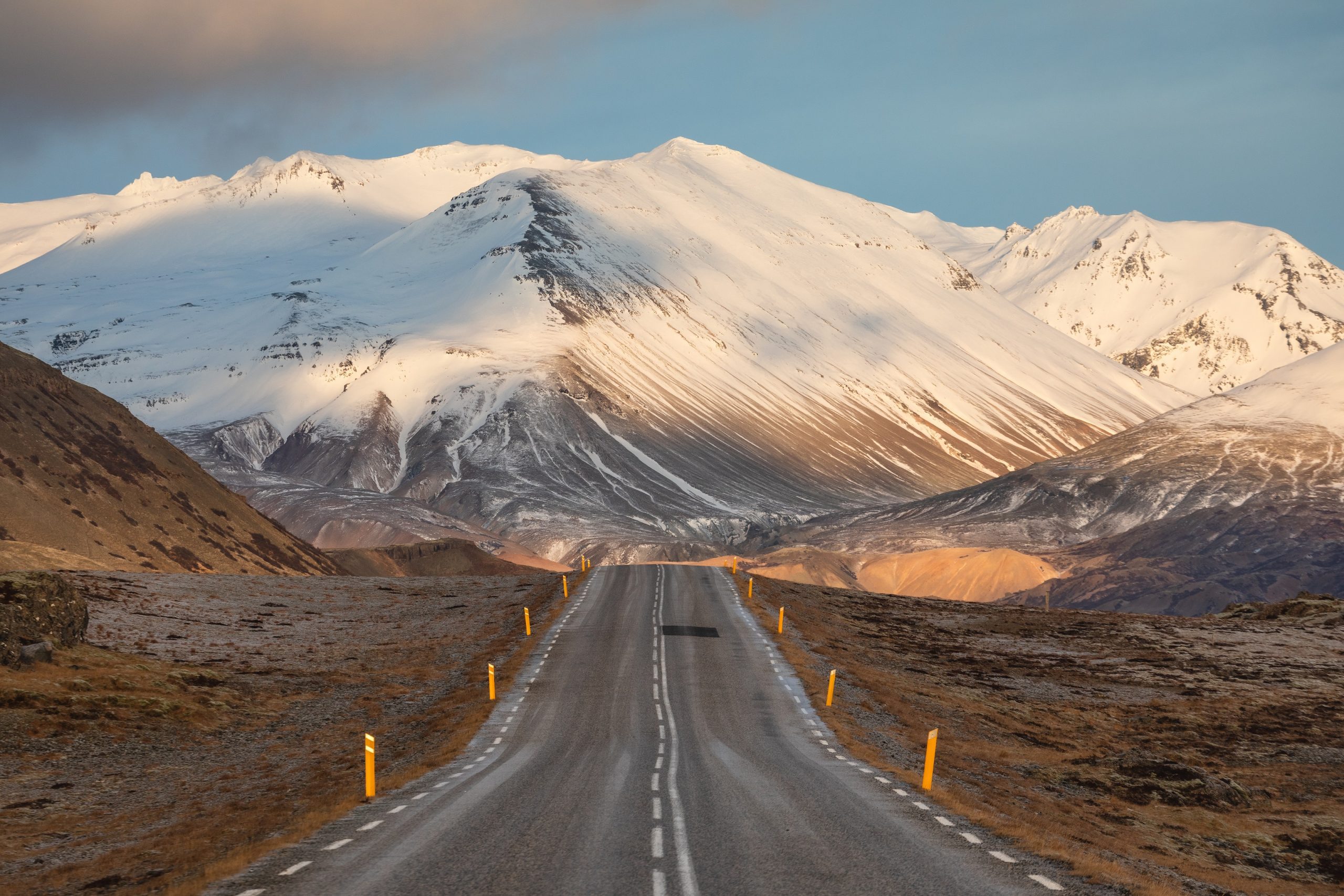
33 – Must I drive to experience Iceland?
No. Plenty of tour operators offer day tours, multiple-day tours, and private tours that take you almost everywhere in Iceland.
If you are on a budget, you can always use Straeto, the public bus service. The only thing about the public bus service is that it stops only at certain places and is on a schedule.
Outside of Reykjavik, the schedule is like once a day, so a little planning is required to travel by public transport.

34 – Any alternative if I am not comfortable driving?
What other options do you have if you are not comfortable driving but do not have the budget to join tours? In addition to joining local tours or using public transport, of course, you can try your luck with hitchhiking.
I have been on both ends of it, and I have spoken with people who have travelled solely by hitchhiking, so it might be feasible. However, it is not advisable to do this during the harsh winter as you might need to wait for hours for a ride.
We have also seen people cycle around Iceland, and last year, a girl hiked around Iceland in 48 days, so yes, there are other options; just choose whichever you prefer.

35 – When is the best time to visit Iceland?
Iceland is a year-round destination. Summer is the peak tourism season, and with the long daylight, you can explore all day (literally, since it does not get dark). Watching the midnight sun is very popular during the summer. With the endless daylight, you can take your time to enjoy every scenery and landscape.
Summer is from May to September. During the peak tourist season, car rentals and accommodations are more expensive.
Winter is trendy for Aurora. Iceland is such a location where it does not get super cold like Russia, Norway, and Finland. The winters are about -5oC to -10oC, which is amazingly comfortable for aurora hunting without enduring the cold. On top of that, the landscape makes the photographs of the Aurora unreal.
People who have been to Iceland in different seasons will tell you that it looks different during summer and winter. It is like two different places altogether. I agree with this. The landscape covered in snow and ice is beautiful beyond description. It is a different experience.
Winter is from October to March. Harsh winter is from mid-December to mid-January (when the craziest wind is).
Aurora’s season is from September to March. Depending on your luck, you may be able to see the aurora between the end of August and early April. Read more in the next section: When is the best time to see the aurora?
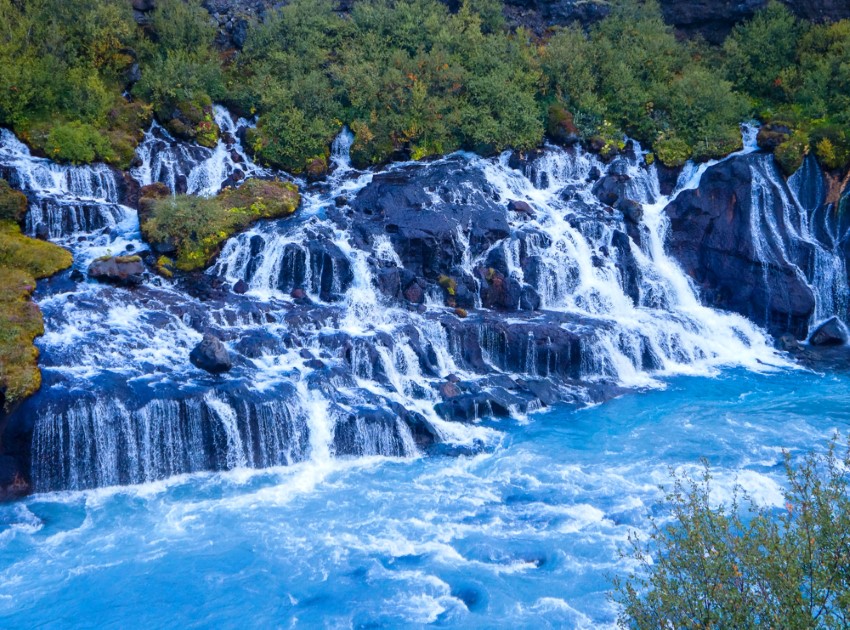
36 – When is the best time to see Aurora?
You can start to see auroras as long as there is darkness and a clear sky. The conditions are usually better between September and March. There is sufficient darkness, and all you will need is aurora activity and a clear sky.
According to past statistics, the aurora is sighted in Iceland between 8 pm to 3 am. This varies from day to day and is dependent on solar activities. An excellent way to get some “feel” about when the aurora will be in Iceland is to check the NOAA auroral oval and forecast. It shows how the aurora oval is moving around the pole.
The next thing that you need to check is the cloud coverage. If the sky is covered with clouds, it doesn’t matter how bright or colorful the aurora is, you probably won’t see much, maybe just green clouds.
After you have done all your homework, the next thing is to stay outside and wait. Aurora comes and goes. Sometimes, it remains for a couple of minutes, and sometimes, it lasts for hours. Nobody can say for sure what is going to happen, but you can be sure that you are there when it happens.
Read more on Aurora Hunting 101.
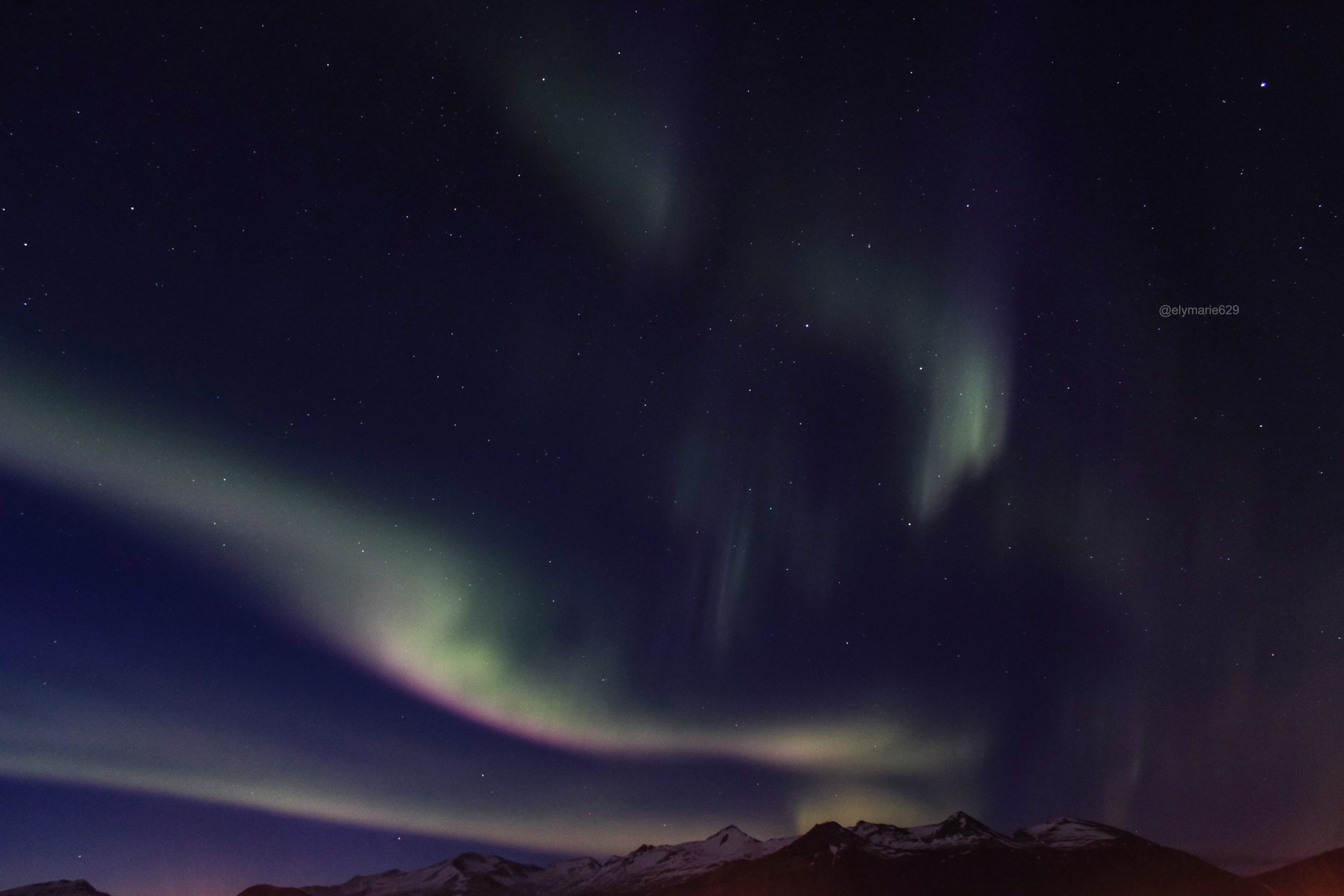
37 – Where is the best place to see aurora?
Anywhere that is dark. Light pollution damages the beauty of the northern lights, so anywhere outside of towns and cities is an excellent place to see the aurora. Understanding aurora hunting will help, or you can ask a local, and they will be more than happy to tell you where to go or where to look.
If you know that the location you are at will be covered with clouds, you might like to drive a little to where the clouds are to have a better chance. Otherwise, you can always wait for the clouds to move, hopefully away.
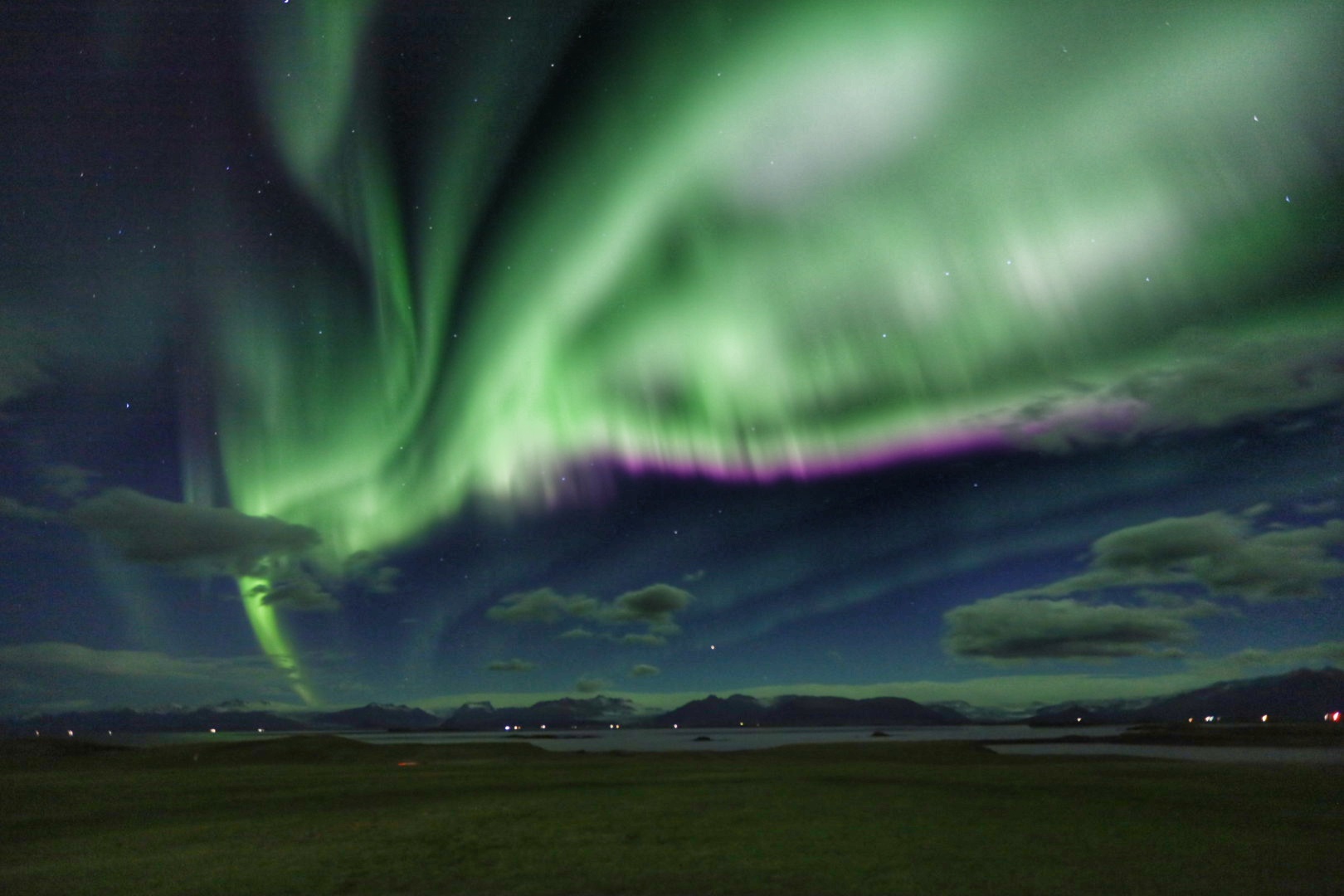
38 – What do I need to bring on a self-drive in Iceland?
A high-quality camera is necessary for all the fantastic pictures you will take. I travel with my Canon RP, several lenses, DJI Mavic, and some other accessories.
There are some restrictions about flying drones in Iceland that you might like to check out. Before taking out your drone, ensure you are in a flying zone.
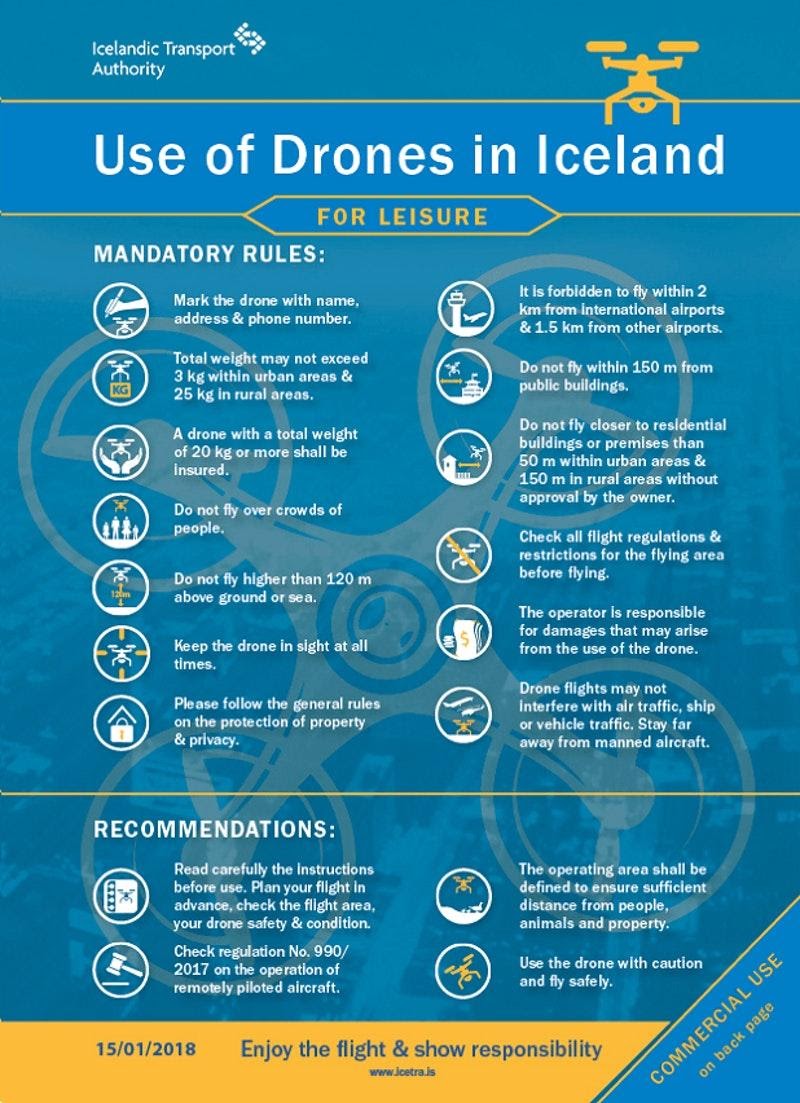
On top of equipment, daily necessities are as follows:-
– packable jacket (windproof & waterproof is recommended)
– reusable shopping bag (plastic bags are not provided in shops, you need to pay for it)
– in-vehicle phone holder (holding a phone while driving is illegal)
– water bottle (Iceland has the most excellent glacier water in the world)
– earmuff/beanie and gloves (you will need these during winter)
– hiking shoes (the Icelandic terrain is not precisely heels friendly)
– sunglasses (you will need these during winter to protect you from snow blindness)
– thermal long-john and sweater (you will need these during winter)
– lip balm and hand cream (the humidity is very low, so lips and hands tend to crack during winter)
– thick socks (you will need these during winter)
Check out our recommended packing list here.
39 – Accommodations in Iceland
Accommodations in Iceland are expensive, in ascending order of price: dormitory, hostel, guesthouse, apartment, and hotel.
Hostel and dormitory are used interchangeably as most properties like this are usually both. You are just getting a bed in a room with other travellers. All amenities are shared. Breakfast is generally available for purchase.
Guesthouses and farmhouses are similar kinds of accommodation. You get a room in a house, sharing amenities with other travellers. Breakfast could be an option or included in the price.
Apartment/Cottage is more suitable for people travelling in a group as they can usually sleep with four or more people. Most apartment comes with a kitchen. Breakfast is usually not an option, but for more significant properties, breakfast can be purchased.
A hotel is a hotel like any other country. The only difference is that Icelandic hotels do not have swimming pools. Breakfast is usually included.
Some accommodations offer facilities like hot tubs and saunas. Some apartments/cottages provide BBQ grills.
Some accommodations are open only in summer, so accommodation options during the winter are more limited.
Book your accommodation with a local DMC (Destination Management Company). Their prices might be better than those of accommodation booking platforms.

40 – Other general information about Iceland
The local currency is the króna (ISK). Euro is accepted in most shops;
Icelanders speak Icelandic, but most hospitality and service industry people speak English;
Tipping is not customary in Iceland but is greatly appreciated;
Iceland uses the Europlug and wall sockets, which have a current of 220A;
Plastic bags are not provided in shops. You can either pay for one or bring your bag;
Cold tap water is drinkable (make sure you turn it to the coldest).












